|
I recently treated myself to a double bill of The Angelic Conversation (1985) and Mirror (1975). I don't think any programmers have paired these two films before, but they resonate with each other, lyrically and visually, as well as offering divergent approaches to art based film making. Both were viewed on a computer screen, with the Jarman film rented online. However this screening of one film after the other was an act of homage to my golden age of cinema going as a teenager in the 1980s. After wee nippering at the ABC Edgware Road, I gravitated to the flea pit circuit that took in the posh Everyman at Hampstead and the grungy Scala at Kings Cross. During this period you could watch double or triple bill features in memorable combinations designed to shock and awe: The Exorcist riding on the back of Enter The Dragon; Terror followed by Savage Weekend (the rediscovered memory of Terror would inspire an arts project called The Melodramatic Elephant in the Haunted Castle); Fassbinder double bills; and, not for the faint-hearted, a starter, main course and dessert of Pasolini films. Also, certain films that should not have been coupled, such as the groundbreaking In The Realm of the Senses (Ai no corrida). I’ve just looked over some calendars from the mid 1980s and was surprised to see how much film I was ingesting. There may have been a limited amount of TV channels in those pre-satellite days, but there was no shortage of films. Auntie Beeb and new kid on the block, Channel 4, had a public monopoly access to the film market. VHS was established and DVD was on the horizon. But to be able to see what your heart and soul desired, necessitated a trip to the picture house. It’s good to see there are plans afoot to design a Scala book, as the cinema produced lovely posters listing their monthly features. I usually hoard memorabilia, so I can’t account for the fact that I don’t have a single calendar month from my membership of the Scala. Perhaps it might surprise you to hear that I really can’t watch films anymore. I rarely go to the cinema. When you are in the business of producing art, there seems to be little time and perhaps inclination for seeking out art in your down time. Maybe it was also studying Film and Literature at the University of Warwick for 3 years and the celluloid feast we had as students, watching each film twice for close textual and semiotic analysis and which also included us projecting the 16mm prints sent up from the BFI. After ingestion, overdose?
While I had an eclectic taste, enjoying the classic narrative joys and happy endings of Hollywood cinema, it was the European art house movies that really tickled my fancy; although they did on occasion stretch your patience; the 317 minute cut of Bertolucci's 1900 seen at the Curzon Bloomsbury springs to mind. In the 1980’s, the work of two artists shaped my aesthetic outlook and personality: Derek Jarman’s gay-punk sensibility that pricked the constricting norms of Thatcherite society; and Andrei Tarkovsky’s metaphysical exploration of memory and haunting use of landscapes.
I had to write an essay to get into Warwick University (in addition to A level grades AAB and a medical examination!) That essay was on Derek Jarman’s The Angelic Conversation which I saw on both the cinema and TV in 1985. The film was a jittery and sensual evocation of Shakespeare’s Sonnets as read by Judi Dench. It was set in a timeless landscape of grainy, every changing palettes of muted colours that condemned men to drift and brood and lock horns in the slow-motion ritual of love and sex. The Sonnets themselves have an enigmatic quality that has divided scholars; the first 126 addressed to a man and the last 28 to the dark woman.
Abbey Fields, Kenilworth 1989
As a young man, dressed in my 1940’s suits, I seemed to wander in and out of both Jarman’s and Tarkovsky’s filmic landscape. I even had a dramatic film, This-That, inspired by my personae and made by fellow student and dear friend, Jacob Barua. That film was recently digitally remastered and there are plans for a sequel that updates the character into the 21st century. I better watch these spaces. After Warwick, I attempted to forge a part-time career as a stills photographer and eventually made it behind the film camera. Apart from several minor juvenilia works, my first real directorial effort was Flood light (2010). This was made for InTRANSIT festival of arts and I made a connection with the V&A Museum, later becoming one of their artists in residence. Although it wasn’t consciously conceived of as such, this film employed the strategies of what we might term the art film. The film used dialectical montage rhythms around the Grand Union Canal and the elevated road in the sky, Westway (A40). It fused together autobiographical elements (school books, carpentry tools), archive photos and film from the 60s and used period locations at the V&A to meditate backwards and forwards in time. There was no narrative drive or dialogue to guide the viewer in interpreting this stream of visual consciousness. A dripping soundtrack connected up images from beginning to end. It was a film about my urban identity in North Kensington. How I was able to intellectually and emotionally connect with water and concrete built environment. It is a film that has been aptly screened under elevated motorway roads in East and West London and in the Whitechapel Gallery. It has all the sins of a first film, but is probably my best work thus far.
Poster for Flood Light, 2010
In addition to making films, i have also curated film programmes and these have been useful platforms to support other emerging filmmakers. These are not exactly double or triple bills, but short films screened one after another and all inter-related on a specific theme. Flood Light was screened as part of a programme in which I invited other film makers to journey with me across the landscape of North Kensington. Local residents were also supplied with film cameras and edited their films at the V&A's Sackler Centre for Education. A panel from the V&A, Westway Development Trust, British Waterways and RBKC Arts selected the Best Film submitted for Flood Light and this was Intersections by Rickster. Henrietta Ross from British Waterways commented on this film: "I was very impressed by this. I thought the format worked really well conveying a great sense of movement. The sense of a journey was represented well, as was the great variety of activity going on around the location and the varied perspectives the location offers on West London life. I thought the different views were matched really effectively with a great eye for detail. The combination of colour, movement, stillness, nature and community activity was really engaging." It was also a pleasure to see an early film from film maker Azeem Mustafa who has since gone on to specialise in martial arts film. Simona Piantieri has also subsequently produced exceptional work. I particularly like the documentary film she made with Michele D'Acosta called A House Beautiful (2017). I followed up Flood Light with another curated programme called West Ten Fade Out (2013). This was able to showcase the film making talents of Dee Harding and Sandra Crisp. When I was the V&A Community Artist in residence based at Silchester Estate, I put together another selection of short films called Home Sweet Home (2014) around the issue of housing and domesticity. I particularly like sourcing archive films and using extracts that provide ironic or amusing contrast in the programme. I used two such extracts in Home Sweet Home and they are animated films from the Wellcome Collection. The Five (1970) is by Halas & Batchelor and opens with a young girl coming home from a party and going to bed; but her pooped toes take on a life of their own. The opening 7 minutes of Full Circle (1974) has exquisite art and animation by Charles Goetz that shows the development of city living and the possibility of over-population in the future leading to the collapse of civilised life. I have also tried to use film to connect residents with the history and social issues in the area in which they live. One example was a free screening I arranged of Leo The Last at the Gate Cinema in 2015. This was and is a profound film that connects with Lancaster West estate and Grenfell tower. I even wanted to screen this on Lancaster West estate for residents and the housing authority but circumstances conspired against that. The residents were locked in dispute with the Tenant Management Organisation over the Grenfell building works. I was commissioned by the TMO to make a short positive film of this regeneration taking into account the residents perspective. The film I delivered was a one hour long film completed in 2016 and called Lancaster West - The Forgotten Estate. It was based on the life stories of seven residents. This was not a straight forward documentary with people speaking to camera. It is voice over set against the architecture of the estate. Although that film was deemed not fit for purpose by the TMO and fell into a state of limbo, I know that it really bonded me with residents in the community who have since become good friends. Hopefully it will have a proper screening in the near future. I have other footage that is strictly reserved for the police investigation. It isn't a good feeling to have art work that is delicately tied to the tragic events of Grenfell. There is no awe, just the shock.
2015 Poster for programme of short films, including rough cut of Lancaster West - The Forgotten Estate
As I think of film, I draw and vice versa. I visualise films in my mind and these invariably start off as storyboard type drawings. The reality its that most films never get off the drawing board. But with the combination of drawing and writing, perhaps I can release some of that pressure cooker tension of being a multi media artist whose main aspiration is to make films. Let me conclude this blog by visualising a meeting of sorts between Derek Jarman and Andrei Tarkovsky on Hampstead Heath. Nothing is impossible in art and film. I need you to imagine that both are simultaneously drawn to the area for the making of a film.
Fade in.
A young man materialises out of the bushes, doing up his trouser belt, exhilarated, out of breath. A trickle of blood flows from his lips. Tarkovsky screams in Russian: cut, cut! The actor has wandered into the wrong film. A grounded helicopter rotor blade whips up a force of air onto the billowing grass and almost topples over the camera. Cut, cut. The production assistant rushes over to the helicopter. The timing is all wrong and aviation fuel is expensive. Tarkovsky curses under his breathe. Then looking at the bemused actor and the apologetic pilot, he starts to giggle and can’t stop giggling. The crew look at each other unsure whether to laugh. Tarkovsky motions for the actor to stand still and for the cinematographer to train the camera on him. Smiles all around and the actor looks up at the sky. It is a bright cloudless summer evening sky. A few rain drops start falling.
Cut to Jarman lining up his shot on the other edge of the heath, near a pond. He has torn up the script (that didn’t seem to be working) and is waiting for something to happen. His actors have got lost and a search party has been sent out. The rest of the crew have gone off for a tea break. A woman in her fifties dressed in a flowered dress walks into shot and sits on a log in the distance. She catches Jarman’s eye. He goes over and speaks to her. Hello, are you waiting for someone? She shakes her head in a combination of yes, no and don’t understand. He tries again. Would you like a cigarette? She nods and takes one. While lifting up the fag to his match, Jarman notices a raw burn mark on her wrist. Jarman wanders back to his camera. He zooms onto her. They hear the sound of a helicopter in the distance. She looks up in expectation. She appears to be acting. Jarman thinks she looks Eastern European, maybe Polish or Russian. He starts filming her as she turns her gaze to the pond and the gentle ripples on its surface formed by the wind.
Fade out.
0 Comments
In A Lonely Place: once, twice, three times. Acrylics, 16x20 inch, 2000 The Lusty Men (1952) Directed by Nicholas Ray. Starring: Susan Hayward, Robert Mitchum, Arthur Kennedy. Warning - plot spoilers! The extensive cuts made to The Lusty Men indicate that RKO studio was dissatisfied with the film. When premiered in England it was seen as a very American subject matter and because it didn’t do well in the U.S. there was a possibility for further cuts. The film is also not firmly anchored to any storyline. It is more wandering and discursive in tone. The sections that include the character Booker Davis, played by Arthur Hunnicutt, were cut for the British audience; these scenes are there for the ideology of the rodeo world being portrayed and as an exploration of character and not for the plot. The film is almost anthropological in terms of locale and character with no real narrative. Only one film critic, Manny Farber, registered any of its qualities. The Lusty Men has subsequently emerged as one of the highest in Nicholas Ray’s oeuvre. It is a modest film that looks ordinary at first glance but has more unusual qualities in many respects. The Lusty Men was made under ordinary circumstances but is not a streamlined, efficient production. It was the producer’s idea to film the rodeo and to ensure the availability of film star, Susan Hayward who gets the top billing. It was conceived of as a Susan Hayward movie who was only available for twelve weeks of filming and this was not during the rodeo season. The film went into production with no script and this was a common feature for Ray’s films. The whole film was made in the studio with the rodeo shots filmed by second unit associates. The film script was improvised after the opening setting. At a late stage of filming, it was decided that the film should end on Robert Mitchum’s death. Everything in the film prepares you for the bust up between Robert Mitchum (playing Jeff McCloud) and Arthur Kennedy (Wes Merritt) and the resultant death and “happy ending”. This fits into the norm for Hollywood films but because Mitchum's character is almost suicidal the resolution is not a problem. Ray reckoned the decision to kill off Mitch lost the film a couple of million at the box office. The story used in the film is a standard success story. This is a regular formulae in film and television and also in stories about sports and entertainment. A young man of talent is trained by an old timer. The young man goes on to achieve success but loses his roots and becomes arrogant. This arrogance leads to humiliation. The resolution involves him undergoing a change of behaviour. But the Lusty Men does not tell this story. Instead of having the rising star as the central figure, Ray focuses on the has-been side kick (Mitchum) and his emotions. The rags to riches story yields another story. It is about Mitch watching another guy have the success he once enjoyed. It has an elegiac quality. Robert Mitchum and Kirk Douglas make for interesting comparisons. They invariably play characters who are going to be defeated. Douglas has a spectacular downfall while Mitchum’s characters usually register dejection and are mournful. Mitchum is often the fall guy in film noir. In The Lusty Men, his Jeff McCloud character is a wistful country boy of limited intelligence. The role is not a huge departure. But what is unusual is one element in the plot; the story of the hero who consciously wishes the destruction of his best friend’s marriage. This is never seen in 1940’s films where a strict Hays Code and respect for marriage is observed. (Ray said to V.F. Perkins that it was just so natural and normal in the film, how could the censors object. You can get away with things by sheer modesty.) The originality of the film lies in the presentation of the character of Louise (Susan Hayward). This is one of the most interesting portrayals of a woman in Ray’s films and is unusual. The romanticism and the sentimentality in the film is attached to the macho world of the male characters. The film is acute about the pain of a macho rodeo life to both men and women. Hayward as Louise Merritt is a calculating woman. She is clear sighted whereas the men are romantically deluded. She is realistic about what to get out of life and with whom. Louise is not prepared to give up her life in the face of the male vanity being displayed in the rodeo world. She is a woman controlling her emotions to get material aims. A female character who displays this in a Hollywood film is usually presented as a schemer or villain; one thinks of Barbara Stanwyck. These are not objectives that are stereotypically ‘womanly.” She never talks about children or family. She doesn’t want to work in the “tamale joint.” This is a fresh interpretation of a female character. Another major aspect of the film is showing codes of masculinity which are presented almost as a theatrical show. The wildest show on earth is not the rodeo but masculinity. The film is successful in making rodeo work not as a lifestyle but as a resonant metaphor which harmonises the presentation of character. The rodeo is about capture and asserting yourself on the past. There is a constant repetition of imagery in the film. At the very ending, after Mitch’s death, a new man enters the rodeo world and there is uplifting music as the film ends for the umpteenth time. The characters are looking for “something they thought lost.” This is not conveyed in the reality of farming where arthritis and the hard labour of tractors are the norm. These have nothing to do with bronc or bull riding. As Wes McCloud becomes more involved in the rodeo, it is not jeans, but the leather rhinestone image that appeals to him. More and more, it is the Roy Rodgers cowboy singing image and not someone dressed for work. The song on the flag. “Old Glory”, and Mitch’s return to rodeo is an attempt to show his past glory. It is an ironic, repetitive, dehumanised rodeo. Ray expressed aggravation that the cruelty involved to get animals wild could not be shown in the film. Within the structure of the film, there is a dividedness which is common to Ray’s films. Here it is between the nomadic lifestyle and one of stability. In They Live By Life (Ray’s 1948 directorial debut) this is evidenced in the lovers on the run and Bowie wanting money to hire a lawyer to prove he is innocent of murder. In The Lusty Men it is about initially wanting to get money to buy a ranch. But Wes is seduced by the glamour and success and instead he buys a caravan which is the perfect 1950s symbol of nomadic lifestyle. In one sequence, Louise is shown sleeping and the camera tracks back to reveal her seated in a car. This is an image of her floating down a street. This theme is strongly registered in the character of Jeff (Mitchum). He is the centre point of this divided world, caught between the nomadic and settling down. This is best illustrated when he first returns to his old home ranch and rediscovers an illusionary security. The Lusty Men is one of the best triangle movies. It is all done modestly and treats this theme sensitively. The film refuses to makes its denouement tragic. The pain it is about is too ordinary for tragedy. The frustrated lives the characters lead are ordinary and we are never tempted to believe that Louise has spontaneous love for Jeff that is going to blossom. She is aware that what Jeff offers as a rival to her husband - stability, security and an unspectacular life - is never going to materialise. The relationship between Jeff, Louise and Wes is unstable. Both Jeff and Louise stand in a parental role vis-a-vis Wes. Louise is a mother figure as well as a wife: taking his boots off; the way Wes sits on the draining board wiping up the dishes. “He ain’t two years old and I ain’t his mother.” Jeff enters as a paternal role training the younger Wes. But when Wes is drunk in one scene, he comes up and pushes himself on Jeff, who then punches him down. They are almost forced into the role of a couple because of Wes’s character traits. Then Jeff has to live with Wes as an adolescent. When Wes discards his advice, Jeff is left alone. One character always feels outside this triangular set up that is reshifting in terms of dramatic relationships. There are a range of other characters who offer models for what the rodeo way of life offers. For Louise it is Grace: “Rodeo will make you an old woman before your time.” For Wes, it is Jeff and Buster Burgess, the latter offering gambling and drinking. Also Booker who is senile, almost mentally incapable of keeping up with the costs and demands of life. None however offer a model of success. Jeff has had success and learnt things. But the movie is consonant with other Ray movies in showing Jeff as simultaneously wise and informed about the ways of the rodeo, with a homespun philosophy where you “eat a little dirt if you have to,” while also substituting guts for good judgement. When it comes to the crunch, he is incapable of good judgement. What he needs and most feels, puts him on the path to catastrophe. Is it logical that his comeback is both a success and a death accident? But this goes with the modesty and unspectacular themes of the film. Jeff (Mitchum) is not a has-been and a wreck. He is not old enough to be a wreck. The death of Jeff is the film’s final form of disaster. Masculinity means you have to find out if you can still do it. You only find this out when you die. This is what the film says about competitive virility. The image of Jeff and his fate as an action image is one of eloquence, poetry. The film puzzles around images of mastery and control. The pride he feels is offered at the beginning of the film. Jeff is standing above the bull in the pen and the shot is composed as a stable frame. Thirty seconds later, the sequence of shots are wild and subjective. The hand-held camera is almost indecipherable. The stability and claim to control is undermined by Jeff’s fall. As an action image this is morally and philosophically pertinent to the themes of the film. 26/02/87 Lecture delivered by V. F. Perkins, University of Warwick, Film and Literature, Movies and Methods : Forms of Analysis 82 x 56 inches. Oil pastel, pencil. 2017. Poem to a drawing Are we walking down a corridor in the National Portrait gallery? Walls lined with the great and good who have killed and conquered. This is all rather tiring and I am looking for somewhere to sit. Commotion in a room ahead, left or right? A gust of wind blows us into the Euro wing. We see a mother and child with candle and umbrella. A man checks his flies are zipped. Above his head, a tricolour ink roller in suspended animation. On the ground, footprints of Prussian blue. Centre stage, chaise lounge. What is going on? Can we sit here? Maybe in the next room, next to a woman and her copy of J. G. Ballard's The Atrocity Exhibition. In front of a painting of the British Prime Minister getting fruity with the American President. Hold on! Is that Robert Rauschenberg trapped in twine from a plumb bob? He appears to be pointing backwards and forward, one hand to 1974, the other, 2019. Can we trust an artist to TELL US EVERYTHING about this space within space That has spilled out from a box labelled Highland Shortbread? Where can I sit? My legs are killing me. Notes to myself This was sketched immediately after visiting the excellent Robert Rauschenberg exhibition at Tate Modern and during the United Kingdom government's formal notification of withdrawal from the European Union. This was also the week when The Daily Mail newspaper on March 28th featured a photo of Theresa May and Nicola Sturgeon with the trivialising head line: “Never mind Brexit, who won Legs-it!”. On the same day, a new 12-sided £1 coin became legal tender across the UK. Pondering all these matters, I started to sketch a scene using Robert Rauschenberg as an enigmatic muse. His free and easy approach to materials, for example, building an umbrella or fan into a painted surface, had me thinking about how to use everyday objects as part of my art practice. I turned to a biscuit tin in my studio. I don't know why I started to collect objects in a biscuit tin or how long they have accumulated (more than a decade now), but this box with random objects ranging from coins, fuses, tea coaster, plumb bob, pencil emblazoned with "Tell me everything," was raided for inspiration and incorporated into the drawing. This was my equivalent to Rauschenberg's "combine" although I have made no concession to three dimensionality. There is added irony in that the box has a culinary connection with Scotland; a nation destined to have a falling out with the English over the issue of falling out of Europe. All these objects and related ideas came tumbling out of the box and into the composition. Some other allusions for the cultural critic to register:
What would you do? Imagine your neighbour Heinrich Boll had left you a spare key and instruction to water the house plants while he boarded an aeroplane to collect a Nobel prize. Would you steal inspiration from the draft in his typewriter? Or Max Opuls had entrusted you, his dear friend, to retrieve a roll of film from his house; the one the censors didn't see in La Ronde. Would you leer at the said negative being held up to a bright light source? Kathe Kollwitz had to nip out to buy some milk and bread. Mischievous thought of adding a smiley face of ink to the desolate image in the printing press? The aforesaid fantasies were inspired after listening to an interview Holgar Czukay gave in the early 1990s on the Radio 3 programme, Mixing It. He recounted how as a student of Karlheinz Stockhausen in 1968, he sweet talked the secretary and gained access to Herr Aladdin's electronic cave. Holgar was able to record his debut album, Canaxis 5, with the studios impressive tape recorders looping together his interest in Musique Concrete and ethnographic folk recordings. Not all studios live up to their profession. In point of fact, given the relative poverty of artists, they invariably have to beg a shed, borrow a broom cupboard or steal a loft. I have only had one bonafide studio. This was once a 1960s council flat (bedroom, living room and a kitchen) and came with the responsibility to practice community art. An author might build a studio around the typewriter on an heir loomed desk or a poet might dream on a hammock in the garden. Maybe virtual studios will one day be the norm for web based artists. The creation of an avatar, perhaps even adopting the identity of the Germanic artists I have already listed. Expanding on this chain of thought -what about that elusive key to the artist's mind?
Script for This-That by Jacob Barua. Printed on continuous feed paper, Warwick University science block.
I am navigating back to 1989 and the University of Warwick. My fellow Film and Literature student, Jacob Barua, has handed me a film script and declared emphatically: you are the only person in the universe who can play this! I hesitated. Had never acted before. And then there was the troubled central character in the drama who seemed all too recognisable; forever on the edge of everything, nothing, relationships, art, politics. This begged the following question: Jacob are you taking the piss out of me or yourself? For a short period of time we seemed to swap identities. Jacob’s intense cinematic vision became one with my suited and booted persona. Jacob was going to use this short film to catapult him into the prestigious Lodz film school. But it was no plain sailing. No film production on this dramatic scale had been undertaken at the university where theory ruled the day. It meant sniffing out equipment and resources. After two weeks of filming, a mere two days were spend in the edit suite, using equipment for the very first time. I recall a few expletives. We had set the date of screening, one day after the final day of editing. A key animation sequence shot on 8 mm film only arrived on the day of the screening and had to be added post-haste, post end-credits. Thankfully this has now been re-edited into its proper place in the dreaming body of the film. We finally have the keys to the digital edit suite. It's only now after 26 years and working together again on restoring the fading VHS tapes, that we’ve got a new grasp on the importance of this film for us. Let me leave the final words to Jacob Baura who was recently interviewed about his Warwick experience. What on heaven or hell was he thinking about when he made This-That?
Jacob Barua:
"The reason I wanted to become a filmmaker, did not have that much to do with film per se. I had always been enthralled by Art itself in all it's aspects. I had been a poet, a musician, a painter, photographer, amateur actor, but probably loved literature most of all. Somewhat like a brat with his hand in a jar full of goodies, I did not want to let go of any of the Arts and decided that there was was only one vessel that encompassed all of them. The only way, in which I did not have to discard any, but instead fuse them, was through the glowing medium of film. I arrived in Warwick...by mistake. One of my obsessions when it comes to the written word is History. Right until today I often wonder whether I am a self made historian expressing myself and researching through film. Warwick conjured in my mind the mystery and glory of medieval times. I was convinced that the University of Warwick was located somewhere within the town of Warwick. In those pre-internet days, a major source of information were brochures. And the university's were filled with images of Warwick Castle and the old cobble stone streets. That was enough for me to decide, given that it was simultaneously the only university offering such a broad course encompassing foremost literature and then film. I got off the train in the quaint railway station only to be horrifyingly informed that the university was far away in some fields between Coventry, Leamington Spa and Kenilworth! I found the course at the university to be exhilirating in it's scope - exactly tailored to my needs. Great lecturers and given the small size of our department, an opportunity to bond with colleagues. The university also happened to probably have the largest independent Art Centre outside London, at the time. There was everything ranging from a philharmonic orchestra to to a cinema with plush seats and a sterling screen, to one of the best equipped professional theaters anywhere in England. Here I was active as a member of the Warwick Drama Society, taking on delicious roles for the duration of my studies. Besides, the university was a beehive of political activity, of all manner of shades. Of course I was aghast that the most prominent ones were for naive fellow travellers of all manner of totalitarian off shots. However the jewel of this mini-city was a massive library, with a salivating wealth of books that was beyond belief. This-That was the result of a deep inner need to encompass my entire experience as a student who had lived in different countries, cultural and political systems. At the same time I set to creating a time capsule to be sent into the future. All Myths were after all created by somebody, even if that was thousands of years back - so why not make one too, there and then, to be flung into an unfathomable distance? My inspiration for the main character was essential to creating a core, and this was based, at least in terms of the visuals on a readily available 'blueprint'. For I used Warwick's most enigmatic and unique real life student - Constantine Gras. He did not fit into any preconception - as he neither had the persona of a typical student, nor even one from any 'civilian' from our contemporary milieu. Here was Someone who seemed to have been historically misplaced, from a 'wrong' age. Like a potter I used him as my clay, to impose onto him a narrative, which I knew would jar when combined with his persona. So here was a man creating himself i.e. Constantine, whom in turn I was creating further. Layers of creation. One of the overarching themes is the struggle that each human has to undertake to find a space of comfort, to be able to be oneself, while struggling against the dominant societal forces. By comfort I do not at all refer to a personal one, but that of the Other. For the most crucial single question ever spoken for me, which forever thunders across all ages is; "Am I my brother's keeper?" We live in a world circumscribed by political correctness. The moment you challenge the narrative of the day, you are deemed fit for condemnation and rejection. In the case of the film, the character not only isn't ascribing to Modernity and the race to keep up with fashions both external and internal, but occupies a realm that defies the obligatory 'standards'. He is still both a reflection of the Ancient, Romantic and Future ages. Whether we like it or not from the beginnings of History, politics impinge on almost everything in life. That is why the culmination of the film is congealed within the incongruous figure of a young pyjama clad student who dares to take on the Rulers of the World. The selfish manipulators - the Daeduluses vs the selfless dreamers - the Icuruses. If I were to try to draw a circle; Sleep - Pyjama - Dream - the Impossible - Courage - Death - Eternity - Sleep.
The reception of the film, I will admit, was heart breaking. An outright regurgitating by the audience. Particularly so - when not even our lecturers or collegues could grasp or extract any meaning out of it. But this should have been expected, as it was intentionally put together in such a way as to defy conventional modes of film-making. And again, it was indeed a film made for Another age. But which one? Time will still tell.
I have no regrets about the film as it was then, and in it's curent slightly re-edited form. It turned out prescient. You are Alone among people. To be fulfilled you have to metaphorically fly, even if demise is the price to be paid. There is no escaping Newton's and other more serious Laws. But just like there was no relevant message in the film for the audience at the time, there similarly isn't any for those today. There are plenty of other better sources, dear audience member, if you are in need of a message. This is not a cerebral feast but mainly a sensory experience. Once I got there, one of the most satisfying experiences at the Lodz Film School was when all students were herded into a cinema, and made to watch the film by Piotr Wojciechowski; he was a Filmmaker, Scriptwriter, Catholic Philosopher but most of all a living legend as a novel writer ("Skull within a skull", "Is it worth to have a Soul" and others). He immediately took to the film. In his laudatory lecture after the film, he said he felt it had the feel of T.S. Elliot's " The Waste Land". He was the first ever viewer to fully comprehend the ambitions of this film. At the Lodz Film School I carried on with the 'tradition' of making This-Thatian films. With no pretence at all. Poland's greatest ever fimmaker, and it's Chancellor Wojciech Has, would always chide other lecturers for being baffled by my films - telling them that they were wrong to search for conventional meanings in my short films. For him they were "Intricate riddles" I don't really have any wise tips for aspiring filmmakers. Rather warnings, in that it is going to be a lonely, cruel, and ungrateful journey, except for the very, very lucky few. Well, take heart - at least there's going to be one worthwhile viewer of your creation - Yourself. Having been trained on 35mm makes a filmmaker by far more disciplined and honed to the workings of a film. The Digital Age has its own advantages. But the downsides are greater. More self indulgence and turning an important medium of Art into a toy. I have been a gardener for a long time now. There's at least one massive film within me waiting to happen. Then I intend to go back to my gardening. It's this and that, after all." If you want to experience This-That, the film is screening on: 10th September 2016 around 7.30pm Muse Gallery, 269 Portobello Road, W11, London Portobello Film Festival Full venue and programme details. This-That Trailer from Constantine Gras on Vimeo. It is with great sadness that I have just received news of the recent passing away of Victor F Perkins. He co-founded the film department at Warwick in 1978 and made a decisive contribution to the acceptance of film as an art form worthy of deep study. I have fond memories of him hunched over the Steenbeck undertaking a close textual analysis of In A Lonely Place with 2-3 students; a more kinetic Victor was found over at the Student Union playing his favourite pinball machine; delivering those impassioned lectures where he poured his intelligence into the vessel of a film; seeing so much nuance in terms of decor and edit, so much so, that I seem to recall, at the end of one lecture, Jacob asked: is it really possible that the film maker meant all this? Victor bough a copy of This-That in 1989 for the university archive. It was always a pleasure to meet up with him over the decades since I graduated. Alas he missed the screening of the remastered film at the university in March 2016, but I was touched when he specially came in to see me and we had a good chin wag about life: how he was adjusting after a recent stroke, his desire to learn the German language, his concern about the corporate development of education and his cluttered honorary office in the department which he really should tidy up. I told him that we had dedicated the film to our old lecturers who had inspired the young to fly. Victor had a rueful smile. I've been working on Lancaster West estate for well over a year now. My commitment extended beyond the commission I had from the TMO (who manage the Royal Borough's housing stock) to make a mural for the new community room and a short film documenting the regeneration of Grenfell Tower. At the beginning, I was naturally regarded with a degree of skepticism. Why do we need an artist on the estate? But after attending numerous residents meetings and putting on art events in lift lobbies and during fun days, I earned my stripes in the community. During my tenure, I've had an opportunity to strike up many friendships across the estate. I offered them an accessible and sociable art. In return, several of them have entrusted me to render their remarkable life-affirming experiences and energising humour. More of these residents to follow. But first let's talk about regeneration and architecture and conclude by weaving both of these back into the beating heart and soul of Lancaster West. As of writing, Grenfell Tower improvement works is well nigh complete. After a £10 million regeneration, nine new flats have been created and offer affordable rents in an area where property prices average over £1 million and one bedroom flats on nearby More West are over £500,000. Each flat in Grenfell has had double glazing installed and a boiler for direct control of heating and hot water. The building has been thermally insulated with a new layer of cladding, although I miss the former design. The nursery and Dale boxing club also come back into vastly improved spaces and facilities. This upgrade to the fabric of a building is important in the context of how the council plan to regenerate this part of North Kensington. Silchester Estate, which is just across the road from Lancaster West, is currently being considered for regeneration. The initial options produced by the council were described as "nuclear" by estate residents. At a recent meeting in the town hall, several residents had the opportunity of making powerful statements to the council about the lack of consultation and the potential impacts of wholesale regeneration on the community and environment. The council listened and voted to explore the options in more detail. They also make a commitment to factor in the possibility of maintenance and infill. It is good to see how local residents are campaigning with a witty strap line (Gradual Change - In Due Course) that might have been culled from the insight of a former architect of Lancaster West, Derek Latham. He developed his ethos of urban renewal on a gradual basis after witnessing the impact of "slum clearance" in North Kensington during the 1960s and 70s. Previous blogs have featured interviews with Derek Latham and Peter Deakins, both of whom worked on the early stage design of Lancaster West estate. I can now present a complete documentary record of all the architects involved and their experiences, hopes and frustrations. One major issue was why the estate was never designed to its initial masterplan. This sense of fragmentation is perhaps the root cause for many of the challenges still being faced on the estate and which are being addressed by the newly formed Lancaster West Resident Association and the Grenfell Compact. I recently had the pleasure of meeting retired architect Nigel Whitbread and showed him around the estate. He lead the team who designed and built Grenfell Tower. It was the first time in over 40 years that he stepped foot inside the tower and enjoyed visiting a residents flat and those stunning views. What's interesting about Nigel's story is that he is a local boy through and through and not many local people seem to be aware of his role in the development of the area. We are also going to hear from Ken Price about the design of the finger blocks, the three low rise housing units that radiate out from Grenfell tower. Clifford Wearden is the design godfather of Lancaster West estate. I suspect his career path was adversely affected by the way the development panned out and not being the consultant responsible for all the later, much revised, stages. Chatting to his widow, Pauline Wearden, I was surprised to learn that, Clifford, like most other architects involved in the project disliked tower blocks. Grenfell tower was only included to maximise housing density levels; Nigel is an exception to this prickly high rise rule of thumb. This perhaps explains why Clifford in later life would drive over the elevated Westway and look across at the five tower blocks and declaim to his family that Grenfell tower exists no more and has been demolished for a new development. This is a poignant case of not wanting to see the concrete from the stone! Nigel Whitbread: I was born in Kenton near Harrow. My parents had a grocer’s on St Helen’s Gardens in North Kensington. We moved as a family to this area in 1949 to be nearer the shop. I read quite recently Alan Johnson’s biography, This Boy. He is a Labour MP and former Home Secretary and interestingly was born in 1949. However his life and the poverty he lived through was in a different world, although just a mile away as the crow flies. He didn’t enjoy the family life that I enjoyed nor did he appear to enjoy his time at Sloane grammar school which I had done earlier. When I was going to leave Sloane, I didn’t know what I was going to do. One day I had an interview at an architect’s office. My eyes were opened. I liked the idea of drawing boards and doing something that I never understood to exist. The first firm that I worked for was Clifford Tee and Gale and that’s where I did my apprenticeship. I went one day a week plus night school to the Hammersmith School of Art and Building. Subsequent to this I became a member of the Royal Institute of British Architects. I knew through delivering groceries that there was an architect who lived near my father’s shop. I told my parents this and my mother said she would speak to the wife of the architect who was also a partner in the practice. I went for an interview and got the job. This was at Douglas Stephen and Partners and this was probably the most influential time in my career. It was only a small practice but doing important things and at the forefront of design influenced by Le Corbusier and other modernists. It was there that I worked with architects from the Architectural Association and the Regent Street Polytechnic: Kenneth Frampton who was the Technical Editor of the journal Architectural Design; and Elia Zenghelis and Bob Maxwell who both spent most of their careers in the teaching world. It was actually like going to a club and we were doing terrific work. Later on, I went to work with Clifford Wearden on Lancaster West. At that time his office was a two storey building in his back garden. It was a huge job for a small group. It was unusual for councils to use private architects in those days. Clifford was a serious architect but had a flair about him. He’d been in the Fleet Air Arm and had a lovely Alvis car which was a convertible as I recall. He did have a very bad habit whilst he was driving of turning his head and facing me whenever he was speaking which I always felt a bit disarming. I found this quirkiness an attractive aspect in somebody who was very precise in most things he did. The whole scheme had been well prepared and thought out by the time I joined to lead the team in designing the tower. The design is a very simple and straightforward concept. You have a central core containing the lift, staircase and the vertical risers for the services and then you have external perimeter columns. The services are connected to the central boiler and pump which powered the whole development and this is located in the basement of the tower block. This basement is about 4 meters deep and in addition has 2 meters of concrete at its base. This foundation holds up the tower block and in situ concrete columns and slabs and pre-cast beams all tie the building together. Ronan Point, the tower that partially collapsed in 1968, had been built like a pack of cards. Grenfell tower was a totally different form of construction and from what I can see could last another 100 years. Grenfell tower is a flexible building although designed for flats. You could take away all those internal partitions and open it up if that’s what you wanted to do in the future, This was unusual in terms of residential tower blocks. I also don’t know of any other council built tower block in London or anywhere else in England that also has the central core and six flats per floor rather than four flats which is typically done on the London County Council or Greater London Council plans. We were wanting to put our own identity on this. The GLC built Silchester estate and I had nothing against that but this was so different in many ways. While a lot of brick had been used in LCC and GLC buildings, we thought that putting bricks one on top of the other for twenty storeys was a crazy thing to do. We used insulated pre-cast concrete beams as external walls, lifted up and put into place with cranes and they were so much more quicker. In an architects mind, they want towers to be an elegant form rather than stumpy. This was a challenge and was why I introduced as many vertical elements within the fenestration as I could. The only thing I could play with was the windows and the infill between the windows. I treated it like a curtain wall, to get the rhythm of a curtain wall. We lost some of this verticality in the recent re-cladding but it’s not the end of the world. And the building is now better insulated as we had different standards then. The floor plans were based on Parker Morris Standards which they used at that time and sadly have gone now. These were very good standards for storage and the way furniture had to be included in the plans. It was delightful to hear that residents thought flat arrangements worked well and I saw the views recently which I always thought were terrific. I wouldn’t have minded living in a tower block myself. Tower blocks were criticized for not being suited to people or a lot of families were being forced into it and they were feeling more and more remote from the street and meeting other people. But there is another side to this and it always seemed to me that if American’s can live in tower blocks, why can’t the English? This is the first and only tower block I designed. This was also the first social housing I ever worked on. No social housing has been built since this and I’m very much against knocking things down unnecessarily. I had heard that there had been problems a few years ago with the heating and it was no good and talk of the whole block having to come down. And I thought, if my heating goes wrong, I don’t want to pull my house down. It’s a great shame that the basic concept for the whole of Lancaster West to have a first floor deck for people, shops and offices and parking underneath wasn’t seen through for whatever reason. This means that there remains a basic flaw. Clifford Wearden and Associates only built Stage 1 and the remaining parts were built by other architects. I don’t think the designers are to blame because there was a requirement that it was designed to have cars for every flat. We’ve all seen things have changed dramatically since then and now cars can’t be accommodated everywhere. After Clifford Wearden, I worked for Aukett Associates and I was there for 30 years until retirement. Recently I’ve become involved with my local residents association and committees in drawing up the St Quintin and Woodlands Neighbourhood Plan. We included the Imperial West site over in Hammersmith and Fulham because that was already impacting on our conservation area. Hammersmith wouldn’t agree to this but we continued developing the plans liasing with RBKC and residents. The Neighbourhood Plan includes objectives around shopping, housing, offices and conservation. We have also identified 3 existing unbuilt spaces which are now designated as local green space and cannot be built on. Latimer Road is included in the plan and we think that could be redeveloped to improve the area and have more housing put on top of the business units. We have to have housing somewhere. That’s where you could do it. But don’t build on our green spaces. The Localism Act which the Conservative government introduced is a very powerful tool actually. Residents are able to influence the way their area is developed. Ken Price was lead architect responsible for the team who designed and built the finger block units (Testerton, Barandon and Hurstway) which formed stage 1 of the building project. Ken Price: My origins are in Derby in the Midlands. I went to the School of Architecture in Nottingham which at that that time was part of the college of art and is now part of the university. I worked for a short time in Derby and then I was offered a job to work in North Africa in Tunisia. I went there for 3-4 years. I came back and worked in Nottingham for a while with some ex-students who had set up practice there and and then changed jobs in and around London. After Lancaster West, I worked with Casson Conder partnership and was job architect on the Ismaili Centre in South Kensington. Subsequently I set up my on my own and did small scale projects, mostly interior work and retired a few years ago. Clifford Wearden won the Lancaster Road West development in Kensington. After a bit of a hiatus, the commission was confirmed for what was called stage one and he asked me to go and lead the team as project architect for the finger blocks. I worked for him and Kensington and Chelsea to develop the original masterplan which predecessors had worked on. Clifford was extremely good at handing over and saying - look this is the problem, you solve it and refer to me if there is still a problem. He was very generous although he had the overall view and concept. I know that he was very sad that the development became a little bit like the Barbican. It was a grander scheme and there could well have been more productive elements which just didn’t arise. I wasn't involved in those preliminary stages of development, so I can’t speak too much about how that evolved. But I was aware that the Silchester Baths on the site became listed and affected the masterplan. I briefly saw the housing in the area before or after it was all painted white because there was the famous or infamous film, Leo the Last. Was it black or white? Why did I think it was painted white. The director was John Boorman. I think I must have seen it just before they did that and probably immediately after. After it was cleared there was no real evidence of life or to how it was. I don’t even know what the state of the dwellings were like and whether they were totally without facilities. At that time there were a number of schemes underway to deal with the housing issue, alongside the problem of car ownership .One could describe it as the deck system when cars were kept down below and freeing up the ground level or the raised ground level for pedestrian use and housing. It was part of the brief to provide that amount of parking and it did subsidise some of the other elements. My predecessor had sketched in a basic outline of the finger blocks. I took that on and developed up the detail of the individual housing units and the spaces between. I suppose we were interested in the intricacies of locking together volumes of accommodation in order to maximise the space of each dwelling. Also providing, to a degree, some private outside balcony or roof terrace on the top areas so there was an opportunity for people to have their own little bit of outside space as well as the bigger outside. I still have a small model of the finger block that was made by a friend of mine, a model maker. It shows the different accommodation elements by colouring. It was really a demonstration to the council on the mix of the different elements. Community garden between Barandon and Testerton Walk. A constant source of artistic inspiration for Constantine Gras and featuring as the backdrop for several of his films: Vision of Paradise. The landscaping was dealt with by Michael Brown (landscape architect, 1923-1996). Clifford was very determined to ensure that the landscape was taken on and he persuaded RBKC to employ him. I think one of the essential elements in the concept was this endeavour to provide as much open green space as possible by concentrating the housing units. The density was probably what was expected or required by local authorities at that time. The estate was designed to try and retain that as much as possible and the tower blocks were an element in that because you’ve got a concentrated stacking of accommodation which again added to the freeing up of groundscape. Although there were a number of tower blocks around at Silchester I don’t think any of us would have chosen to have incorporated the tower block but it must have contributed to this density issue and freed up the amount of green space that was enabled. I think the estate was built to a good standard. We persuaded a brick manufacturer called Ockley to make bricks especially for the estate which weren’t available. It was just at the start of the introduction of metrication and it seemed to me, in particular, that it would be rather nice to make life easier in measurement terms to have bricks that fitted the metric. So they are specially made, 30 centimetre long bricks. We wanted to use brick as the main element in order to connect perhaps with the past more than you would have done with clip on panels. It does survive time rather better than a lot of materials. I still imagine they look pretty good. They were very nice brick manufacturers. I knew there was a hiccup in the construction process but I couldn’t quite remember what it was. (The contractor, A.E.Symns went into receivership in 1975 at the very end of the construction of phase one). I can’t think of a building site where that didn’t arise especially as the construction was over such a long period. There were industrial dispute problems (three day working week and building strike), but not hugely disruptive as far as I can remember. In those days it was very difficult to get contractors to keep the site clean. Now because of health and safety issues, I think building sites are much better managed. It’s a shame they never built the planned shopping centre or offices. There was an expectation of community facilities including commerce and everything else in order to make the place work. I don’t think there were any warnings flagged up that there might be vandalism. It certainly wasn’t in evidence as it was completed. I visited after it was fully occupied and there didn’t seem to be any evidence of vandalism then. We never got any feedback as a practice on you should’t have done this or that. Perhaps we could have foreseen some of the possible problems. At the time disability access wasn’t an issue. It should have been but it wasn’t. Now that wouldn’t be allowed. You have to provide much more facilities. Unless the facilities are provided people will abuse what’s there and definitely need alternatives. Maintenance has been the problem in almost every area of social housing that was built at that time and subsequently. it’s one thing to realise and provide housing for umpteen people, but then to not maintain the estates or keep them going. It was very short sighted. That’s why social authority housing has all but disappeared because nobody is prepared to take on the long term issues. It was a product of its time in the way it dealt with a big housing issue, sub-standard housing. And hoping to provide the mix of urban renewal, accommodation, green spaces for enjoyment, kids playing and all the rest. This was just one of a number of schemes which were resolved in different ways but the deck idea was a sort of constant thing throughout. Alison and Peter Smithson’s Robin Hood Estate, which is due for demolition now, was one of the background influences on the concept of Lancaster West. There was also a reference perhaps to the Lillington Gardens estate just off Vauxhall Bridge Road. That’s a famous development by Darbourne and Darke which I think still survives very well. Ideas of large scale redevelopment and housing tend to go through different phases of acceptability or relevance and it’s very difficult to look back and say that was the right decision to make. In some cases it was the only option either because of financing or government pressure or politics. But I would have thought that if the masterplan was completed it would have provided a better result than has eventually arisen. But it’s very difficult in hindsight ever to say. Pauline Wearden whose husband was the lead architect for Lancaster West estate masterplan and building stage 1. Pauline Wearden: Clifford was born in Preston, Lancashire in 1920 to working class parents. His father was a plumber and his mother was in retail with a profitable cafe. Clifford was his mother’s golden boy and she paid for him to go to university. There were no architects in the family. It just came thorough Clifford. Clifford studied architecture at the University of Liverpool from 1938-40 and 1946-48. He was very fortunate because that was a prestigious university in those days turning out many famous architects and Rhode Scholars. When war broke out, he immediately volunteered. He had a lovely war, mostly cocktail parties. No. No, He did have a lot of tragedy and he saw his best friend shot down. Clifford was a pilot in Air Command. He had travelled as a student on what they call the Tour and he’d been to all the classic places but during the war he also saw some exotic places. From 1949-54, Clifford was chief-partner for Sir Basil Spence. This was when they got the commission for rebuilding Coventry Cathedral and Clifford was given the job of preserving the ruins. He was very proud of that. I don’t know what brought him to London. But he had no home and went to International House Hostel. He lived in a hostel for years. He didn’t have anywhere stable until he bought his top-floor flat in Argyll Road, Kensington. Then he came across this derelict house on Homer Street, Marylebone. They were a row of 6 Georgian houses in that street and the property owner wanted him to do up the other houses as well. So he worked on those and then bought one of them. That was probably one of of his first jobs alone. By the time I came on the scene in 1965, Peter Deakin was there and Derek Latham was a student. Clifford built an office at the back of the house. A very nice studio designed by him which was contemporary which might have looked strange at the back of a Georgian house. This is where the master plan for Lancaster West was prepared. Eventually the practice had to relocate premises as there were twelve in number. It was like I married twelve men because they were always in our house. Clifford came home one day and he said they are blowing up one of the houses in North Kensington. And we said - what! And he took us all in the car at night. The director was just about to film the house being set on fire and demolished. They had all the safety people and security and police vans. We had to creep through the security set up. Nobody had invited us but we said we wanted to see it. They had built a false house to make a cul de sac and when you looked it was completely false, but it didn’t look it. So we were exactly there for the big bang. The children were thrilled. I can remember seeing big cameras, arc lights, just like you dream for an outdoor film set in the dark. It was typical of Clifford to have the children up. He didn’t want them to miss anything. However, I don’t think Clifford ever saw the finished film, Leo the Last. He wasn’t particularly interested in films. Lancaster West was his first very big job. But he got into the mould very easily. He more or less expected it working with Sir Basil Spence and being up there with all the old Liverpool people. He was very much an architect’s architect and he felt that his time was coming. Some architects don’t like meeting their public, but he was very good at that. I think he listened to them. One of his ethos things at university was social housing. So he felt very strongly about it. Of course, affordable housing it’s called now. I think he’d be absolutely disgraced by some of the policies such as right to buy. However, I don’t think he was a socialist. I don’t even know his politics but he was fairly traditional in many ways. We married in 1969 and you took over your husband’s life or it took over you. He was doing very well in 1969 but of course it’s a hand to mouth existence. Your only as good as your next job and the 70s were quite stressful and then in the 80’s the work fell away. We had to economise and got rid of a car. We were trying to think of other ways to save money. It’s very difficult when you’ve been having a certain lifestyle and it worried him terribly. He used to worry about what might happen and I always felt that was a terrific waste of time. He lost quite a lot of sleep over some jobs. Clifford believed that the tower block at Lancaster West was demolished. We drove past it on the Westway. He said it’s no more. And I remember saying to him, that we should have gone to see it come down. In the family we all thought it had gone but one day my son said it was still there. I think he would have been relieved, quite honestly, if it came down. He didn’t want it built. He didn’t want to be in this era of tower blocks. He felt very strongly about vertical living. It wasn’t right. So I don’t think he took any pride in it, except that it was not a bad building and it did work. I’ve never really appreciated that Lancaster West was landscaped or intended to be. In the model of the estate that my son has hanging from the wall in his house, there are little trees made by Ken Price. And they always put trees in as their panacea for making it look homely. But it did look good in the end and not as desolate as it might have been. I’m afraid to say that driving past on the Westway is the nearest I’ve ever got to seeing the estate. I’ll have to go. The best way is to walk around, I imagine. I'm going to end this essay with a few extracts from residents who live on Lancaster West estate. We are not now talking about perspectives and plans or so many housing units that can be redeveloped. We are talking about homes. People who have planted roots, raised their family and want to retire with peace and dignity. These flats and houses that were designed and built in the 1960s and 70s are now home to a diverse range of people who want to live in one of the richest boroughs in the universe. They deserve to have the final word. One hopes that in 10 or 20 or 40 years time, that they are still living in the area, as the new kids on the block are contemplating how to buy into the next cycle of housing redevelopment. Christine Richer, resident of Hurstway Walk: My mother was an African-Welsh woman and my father was black African American. They met after the war in the West End. Two weeks after my 18th birthday, I came to London and I landed in St Stephen’s Gardens in North Kensington. Massive, one room bedsit with the kitchen in the corner and the mice. The mice were hell. That was my first living in a big city. I came to the estate in the 70’s. Funny story. The first day I came here to meet the electrician and the gas people. No one turned up. I end up sleeping on the floor. And I had the most vivid dream of my life. I wake up in this dream watching my coffin being carried down the stairs. I saw these two shapes and they were my daughters. But it was very pleasant. I thought this is my place. My place on earth. I’ll live here till I die. As a child, I moved a lot. In Grenfell Tower there was a really nice club, like a residents social club and my partner at the time was on the Committee. That was my first introduction to the estate. It was full of different people who knew each other from the neighbourhood: Moroccans, Africans, blacks, whites, Portuguese, Spanish. I think with my involvement in the resident association and Estate Management Board, when the children were young, they have learnt a sense of community. They would always come and help me if I say I’m doing something with the R.A. Volunteer themselves, wash dishes. The garden down there was very important to me and the kids. They spent their formative years down there with or without me. We had family parties, barbecues. That living space outside there meant a lot to me. I do believe that we are going to get knocked down as all this gentrification is happening all around us. And we are not a Victorian block which is a beautiful thing. We are a 1970s fling them up, fling them down block. I don’t know where I’ll end up. That’s the biggest concern for me. That makes me stay awake at night. That makes me cry. If they could build another block, 4 or 5 streets away, where I knew I was going to be rehoused. It could be Manchester. All my close friends who live on the estate, only about 3 are here. Everyone’s gone. It’s a changed community. I haven’t always loved all the neighbours. But the neighbours that I have liked and I’ve made friends with, we’ve loved living here. The old families who brought up their kids and their kids have grown up and moved away. It’s been a home to a lot of people. Edward Daffarn, resident of Grenfell Tower: I’ve lived in Grenfell Tower for over 15 years now but I’ve lived in North Kensington, Ladbroke Grove, Notting Hill Gate, my whole life. I found education was quite a therapy. I became a social worker for about 7 years. And then sadly my mum, got motor neuron. so I gave up work to look after her. I haven’t got back into social work. But what I have got involved with is housing issues on Lancaster West and in the Royal Borough of Kensington and Chelsea. The stuff that we’ve been doing on Lancaster West started as a result of the Academy being imposed which was 5-6 years ago. When we first started there was virtually no community groups around. Five years later there's a lot of community activism because of what’s been happening in housing. Westway 23, Focus E15 Mothers, The Guinness Trust down in Brixton, Our West Hendon, Sweets Way and all the radical housing network. There’s all these different struggles. On the 24th June, this year, 2015, the council passed a motion in the full council meeting saying that they were going to go ahead with the destruction of all low density social housing in North Kensington. Low density means this, They’ve been built nicely, giving people some space inside and with some green residential amenity outside. Trees and green space for their children to play in. Low density housing. It’s not anything else. It’s just nice estates. It will be interesting to see what will happen to Silchester. Because sooner or later, one community is going to say, and it only needs one or two inside that community to lead the rest - just to say - your going to knock our houses down - oh yeah! Oh yeah! Let’s see about that. North Kensington has a good history of not just taking these things lying down and when people finally wake up and realise what is going on, maybe the council will get a bit of a shock. They call Lancaster West the forgotten estate. And it hasn’t been called the forgotten estate for the last couple of years. It’s been called the forgotten estate ever since I’ve been on here. If it had been maintained properly, Grenfell Tower and the finger blocks are quite beautiful. Particularly if you live here. I don’t know the architect that designed them but they have architectural merit. I don’t know how you say you love your home. You love your home. If we remember what happened in 1974-75 by the signs, Get us Out Of this Hell, then maybe the Grenfell Action Group blog, the protest that we did going up to Holland Park Opera, the procession of Westway 23 along the Westway, will be things that in 25 or 30 years, people would look back and say, when they took away the stables, the Westway Stables, when they took away the children’s centre, didn’t people say anything. And they get on the computer. Look I found this Grenfell Action Group. Yeah they did something, And they did this demo. That will inspire the next generation of people who would care about their community. Clare Dewing, resident of Talbot Grove House: My parents were squatting in and around the area. Mum became pregnant with me and said right Paul, get us a flat now. My first steps were actually in the flat that I live in right now which I share with my mum. When my mum walked into an empty house, she put me down. I stood up and apparently I ran just clean straight across the room and those were my first ever steps. Growing up on the estate, we were told never to leave the estate because I’ve always viewed the estate as two halves. My half which is Talbot Grove house, Verity Close and the other half, the finger blocks and Grenfell. So when we were a bit naughty, we used to go on the other half and do knock down ginger and stuff like that. I did probably knock on Christine’s door. About 1993-4, I was quite naughty and I’d be going to clubs, sneaking out. Mum and Dad wouldn’t know and my friend would say she’s staying at my house and I’d say she was staying at her house. Teenagers you know. I do remember it being quite scary trying to sneak back into Ladbroke Grove and we got mugged a couple of times, got followed a couple of times. But in recent years, I do feel the safety has improved. There used to be crackheads on every corner, all along Portobello. But that kind of edginess gave it a vibrancy which unfortunately, I think, it’s almost gone. About 5 years ago unfortunately my dad became ill and I moved back to my parents house to look after my dad. We’d always known that my mum’s memory wasn’t too good. But it was only after my dad died that we managed to get her to have a full proper diagnosis that it was early on-set dementia. Mum’s going well. I think the progression of her dementia has slowed and I think that’s down to a combination of exercise, good food, good stimulation. I wanted to join the R.A. because it got me to kind of flex my muscles again in using organisational skills in a different way and and just giving back to the community that’s helped me out so much over these last few years. Kensington and Chelsea are an amazing borough to live in especially the way that they look after the older population. I also had a bout of depression as well and the services that were available to me are not available to some of the people that I’ve spoken to. So I feel that the support is there and that’s why I’m really surprised about the state of the housing here. It doesn’t marry with my experience of all these other services. I think Kensington and Chelsea need to be aware that if they just sell all the properties off and make it into a million plus houses, that what draws people here, what draws people to Notting Hill, what draws people to Portobello, would just be gone. It is that mix of culture that drew people here in the first place. That made it trendy. That made it hip and cool to hang out on an evening. It’s just going to turn into Kensington High Street and be replaced by Cafe Nero’s and shoe shops and places you can’t actually afford to shop in or buy food in. What we are trying to do as a RA here is to lay the foundations now. We're trying to get ourselves prepared and ready so that when the regeneration does come that we are ready and we've got some ideas together. Hopefully we can influence them which would be great. There is a corridor sized gallery at the V&A that I am forever drawn to. Literally, in the sense that I love sketching here. It's the Sacred Silver & Stained Glass collection in room 83. During my tenure as the museum's community artist in residence, I used stained glass to meditate on contemporary housing issues. Nathaniel Westlake's magisterial panel at the V&A, Vision of Beatrice, inspired an installation and artist film. The Westlake stained glass panel was made for a V&A exhibition in 1864 and was possibly conceived in the house that Westlake had built for him in the heart of North Kensington. The house is still standing at 1-2 Whitchurch Road opposite the Lancaster West estate and embodies the complex history of social change from the extremes of Victorian affluence and poverty to modern day regeneration and gentrification. This listed building would be a multi-millionaires paradise but has been converted into six bedrooms by St Mungo's and is a hostel for those needing support into housing and work. The house was situated just across the road from my artist studio which itself was a former council flat about to be redeveloped into More West. During my residency, I recorded an interview with Terry Bloxham who is a ceramic and glass specialist at the V&A with responsibility for the stained glass collection. I wanted to understand more about the context in which Westlake had made his stained glass panel and Terry quite rightly took me back in time. I was surprised by how the past would resonate so strongly with the way we live today: the forging of nation states; how religion can violently divide and spiritually unite; and the evolving technological and economic context to the making of art. Here is an edited transcript of our coversation: Terry Bloxham: Why Westlake? Why that panel? Constantine Gras: Why that panel? I didn’t know anything about it until I started my V&A Community Artist residency. I’m based in a studio in North Kensington that is part of an estate, the Silchester Estate. It’s part of a new housing development taking place on the estate. In the run up to my residency, I cycled around the borough, looked at listed buildings and I came across a house, just across the road from where my studio is. It’s the house that was built for Nathaniel Westlake. TB: Oh. Who be he? CG: It’s a bit of a juxtaposition from the estates. You suddenly see this listed building that was built in 1863. It was built by his friend and architect, John Francis Bentley, who later went on to design Westminster Cathedral. And they were both converts to Catholicism and collaborated on St Francis of Assisi church on Pottery Lane in North Kensington. But I was interested in this grand looking house near an estate and that's now run as a sort of hostel. It’s had a bit of a checkered history as this area of North Kensington has. Poverty and slums. Now property that is valued in the millions. TB: Where is North Kensington? CG: This part is opposite Latimer Road tube station. TB: I think I know. Basically Notting Hill west. CG: That’s right. TB: I know that neighbourhood. There’s a great reggae shop. Hopefully it’s still there. CG: So that’s how I came across Westlake. As an artist with a studio in the same area, albeit in a different century, I’m very interested in predecessors and making connections with them. And to discover that the V&A museum has a work of art that has a connection to the very streets in which I'm working. I’m also interested in a film that was also made in the local area and this is called Leo The Last. It was made in 1969 by John Boorman on the site of Lancaster West estate just prior to it being built. It’s about an aristocratic person who moves into the area and he gets radicalised by his interaction with the West Indian community. Some memorable imagery in the film involves looking through a telescope and also patterned glass in a pub that distorts the point of view. I suppose at one level, I wanted to explore or create a connection between film making and stained glass. In the sense of camera lenses and glass transmitting light and how they might be used for perception and analysing or documenting the world around you. Using fragments or a diverse range of media that can be pieced together to make a whole new work of art. And one not necessarily made just by the artist, but involving collaboration. Also I feel a little like that aristocratic character in the film. The artist as an outsider who comes into an area and interacts with the community and how this might radicalise either them or the community or not as the case may be. That is the type of thing I’m wanting to do in my community focused project work. I’m hoping to create a Westlake House at the V&A Museum, in addition to making an artist's film. TB: Brilliant. CG: Perhaps you can help me shed some light on Westlake and how and why he came to make this wonderful panel. TB: Westlake in the nineteenth century, is, near enough, the culmination of a movement that we now call the Gothic revival. And the Gothic Revival was a reaction against eighteenth century stuff and we are going to be talking about that as we progress through time. This involved a revision in the theological understanding of Christianity and also the furnishings of Christian churches. And all throughout the gothic revival period, whether you are talking about stained glass or metalworking or textiles, all of the things that were used for church furnishings, they kept harping on, we must do it in the medieval manner. And that’s why you’ve got to understand the medieval manner in order to understand Westlake. That’s why we are starting here in the medieval period. We are looking at thirteenth century glass. CG: Was this being commissioned by the church? TB: Yes. it was church law that you had to have some sort of decorative, figurative work in the church, that illustrated the Saint to whom that church was dedicated. All images in churches were meant to be instructive. People always say it’s bibles for the poor. But that’s sort of an insult, because it’s calling them illiterate. And I prefer to look at it, not as an age of illiteracy, but as an age when you didn’t need to read and write. Only a few people did. In the middle ages, TB: So here we are looking at a panel from the mid thirteenth century showing a scene of King Childebert being chastised by bishop Jermanus or Jermaine. It is telling you a story, an episode from the life of a real king. His name was Childebert. He’s in the middle of the sixth century and was one of the first kings in France. After the collapse of the Roman empire in the West you have all these so called barbarians moving in. You can tell my preferences lie with the so called barbarians. Various tribal groups as they were known: the Goths, the Gauls, the Francs, the Germanys, the Celts. The celts became the Brits. These groups are going to form our nation states. Clovis was one of these Frankish groups and from Frank we get France. This is where Childebert is descended from. In the panel, we have Childebert being chastised by bishop Jermanus, the first bishop of Paris. He is chastising the King because he had just been on a campaign to conquer the Spanish city of Saragossa. The bishop was upset about this because Saragossa was a christian city. Bishop Jermanus forced Childebert to build the first church in Paris as atonement for his sins and this church was dedicated to St Lawrence. This church was being rebuilt in the thirteenth century in the newish Gothic style and it was rededicated to Jermanus who by then had become a saint. CG: Can you tell me about the designs used in stained glass and the process of making? TB: Medieval decorated windows are composed of small, irregularly shaped pieces of coloured and clear glass. The idea was not to have big square panels of glass which they could make, about A4 sheet size. It was to make a sheet of glass, cut it into irregular shapes and move those shapes around to form a picture. And then those shapes are held together by lead. So it became known as a mosaic-type construction. When you think of a Roman mosaic floor, little pieces of tesserae arranged to make a picture shape. And then they are embedded into cement to form a solid picture. It’s the same thing with mosaic glass. The only painting that you have on it are the details that you can see in the hands and the face, the folds in the clothing. That’s just simple blacky-brown iron-based pigment which is fired onto the surface of the glass. Glass when made is clear. But in its molten state you can add colouring agents to it. Cobalt will make blue. Copper will make green and also red. Manganese will make a purply brown. Depending upon the intensity you can get this nice purply-brown robe or flesh colour. That is know as pot metal because you hold the liquid glass into a pot and add the metallic oxide. So you have clear glass and pot metal glass, cut into small irregularly shaped pieces, put together to make a nice, pretty little picture, all held together in this lead framework. And whatever paint you have was just an iron based pigment onto the surface of the glass to give you your details. That is mosaic glass made in the medieval manner. That is what Westlake is trying to achieve. I have to introduce another element in the manufacturing of medieval glass. Something that was a big technological revolution. I mentioned earlier that properly speaking, it’s not stained glass, it’s decorated glass. And the reason why I say that is because stained means penetration of glass or staining glass. That doesn’t happen until the magic year of about 1300, probably in Normandy. Some bright spark discovered that putting silver into oxide of some form and then firing, what it did was to penetrate the upper levels of the glass and create this lovely lemony yellow to a burnt orange colour. And the reason why that was so revolutionary was it enabled you to have more than one colour on the sheet of glass. We looked at yellow glass and red glass and blue glass and green glass that is known as pot metal glass. That is clear glass that has been coloured. Coloured glass is more expensive than clear glass. Any time you have extra processes it’s going to increase the price. We do have those few surviving documents that give us prices for the middle ages. So we know that glass coloured all the way through was more expensive. Staining it is incredibly cheap to make relative to the older way and once it comes in, it doesn’t disappear. When we get to the Reformation in the sixteenth century, Europe is torn apart by different believers or practitioners of the Christian faith. In the middle ages, remember there is only the church. There is no protestant, no catholic. It is just the church. So you have to put yourself in a time when your world, your faith is being torn apart, is being questioned by people who are very learned and very persuasive. And in some cases also inciters of violent activities and feelings. We tend to blame the whole reformation on him, Martin Luther. He was pretty moderate. You also had people like Calvin and Zinger who were the militant side of the reformation. And there was a lot of destruction and a lot of change. But in Europe today, you will still find this part of Germany is Catholic, but that part is Protestant. But fortunately not fighting each other. England’s story is different and was more violent. Not so much people killing each other, but people destroying anything suggestive of religious imagery. CG: You get a snapshot of those times at the recent iconoclasm exhibition at the Tate. TB: Yes that was a good snapshot. And we also have documents from stain glass makers, petitioning the local leaders of the city, the principalities. Saying you are putting us out of business. We used to make a living making religious windows for churches and it was just no longer allowed. On the continent they started to turn their hands to other iconographic subject matter in stain glass making. TB: What we are looking at now are products of Netherlandish workshops who mastered from the fifteenth century onwards, the art of very fine, but mass and cheap production of glass windows. These are simple pieces of cylinder glass, cut into a circular shape and solely painted. So its clear glass, in silver stain and black pigment. They are cheap. They are incredibly finely painted because this is the age of the printing press. So engravings were made and then they would be printed and they would be used as models for these stained glass workshops. So infect they’re copying exiting art works, unlike in the medieval period where they don’t have the benefit of mass produced engravings and stuff to copy. This panel is the story of Sorgheloos which is a secular version of the old testament story of the prodigal son. This guy, Sorgheloos, goes out, he inherits a whole bunch of money, spends it on wine, women and song. And in the end, all he has left is an old woman, two starving animals and a bunch of straw to eat. So unlike the prodigal son he’s not welcome back with the fatted calf. What also happens in the middle of the sixteenth century, these chemists as we would call them today, alchemists as they were known, developed more pigments that could be fired successfully into glass. In the medieval period it was just that blacky-brown iron based pigment. Now we have enamel colours. So we have the greens and all the shades. Red and all the shades. Blue and all the shades. And the yellows. CG: It must have been a wonder to behold, a sort of technicolour movie. TB: Yes it was. That’s why they were popular. Also coloured glass was expensive and enamel paints are cheaper than coloured glass. So we are now in the age of just simply painting on glass. Think of it as a transparent canvas. Because that is where we are going, painting on glass. Let us jump forward to the middle of the eighteenth century. We have aristocrats interested in the gothic. Walpole made Strawberry Hill which was his idea of Gothic. And then In the early part of the nineteenth century we start getting academics in Oxford known as the Oxford movement. They were also called the Tractarians because they produced a lot of tracts. They are looking at medieval theology and seeing it or pre-reformation theology as a more pure form of the Christian faith. They are not advocating a return to catholicism but they are advocating breaking away from the corruption that crept into the English church in the eighteenth century. Shortly after, a complimentary, although at times, rival group, grows up in Cambridge known as the Cambridge Camden society, but also known as the Ecclesiastics when they are sitting in London. They were interested in pre-reformation theology, but more importantly in pre-reformation architecture and church furnishings. So you have in Oxford, the academics looking at theology. In Cambridge, they are looking at the physical structures of the furnishings. So we are at the beginning of the nineteenth century at that time when people are looking back to the medieval world and things done in the medieval manner. So this is where the Gothic Revival begins. Also in 1824 the Government passes what became known as the 600 churches act. Christianity had fallen into corruption in the eighteenth century. The church fabric itself, the buildings were neglected. There were a lot of people assigned as clerics in churches who just stayed in their country estates and took the money and they didn’t even maintain the churches. So the government steps in and makes a proclamation, effectively going, thou must build churches. Into this comes the great architects like Butterfield, Street, Pugin. So the very first half of the nineteenth century is what we know as the Gothic Revival. Church building, church furnishing going on and stained glass starts apace. Also in the 1850s and 60s craftsmen were thinking why can't we do it like the medieval stained glass makers. They couldn't simply because medieval glass is mouth blown. So there is no evenness in its thickness. Each bit of glass that the medieval craftsman made, this bit is thin at one end, but it might be thicker at the other. So that when you put it into a window and light comes through that little bit of glass, the light will come through differently. It will be less bright in the thicker bit and more bright in the thinner bit. The medieval craftsmen knew that. That's what the Victorian stained glass makers were really trying to discover. TB: Nathaniel Westlake was a freelance designer. You could make a living by doing that. He went around to companies like Powell’s who were probably the biggest manufacturer of windows at this time. He would show his portfolio of how good an artist he was. Also a portfolio of stained glass design that he could offer to them. And that is how he was making his living. But in about 1858-59, clearly by 1860, he had become involved with the stained glass firm of Lavers and Barraud. In 1864 the V&A had an exhibition of stained glass and mosaics and one of the firms that submits things that were selected to be displayed was a panel made by Lavers and Barraud to the design by Nathaniel Westlake. So this is just made for an exhibition piece as far as anyone has ever been able to find out. It wasn’t actually a potential commission which a lot of exhibition pieces were. This just seems to be solely their own making and as it’s a design by Westlake, one makes that big assumption that it’s Westlake’s idea. The iconography of this panel was all in his head. We know that Westlake was friends with the Pre-Raphaelite brotherhood. The Pre-Raphaelite brotherhood like many groups in Europe were interested in things medieval. They’re looking at more literary subjects. Morris and co were doing lots of things like George and the Dragon windows. Dante Alligheri, the writer of the famous Divine Comedy, from the early part of fourteenth century was big. There was a lot of interest in him. The iconography of the Westlake panel is quite complicated. It is derived from Dante’s Divine Comedy. In this poem Dante was granted a trip through hell into purgatory and finally into paradise. It’s a wonderful story. Dante is lead by the Roman poet Virgil who to him represents reason and as Dante is going through hell and purgatory he is reflecting on his own life. He is working out his own sin. At the very end of purgatory, this person called Beatrice starts to be mentioned. Beatrice was a real person, Beatrice Portinali. It seems that Dante knew her when they were children in Florence. He was a member of one family and she was another. For whatever reason and remember Italy wasn’t a unified country, it was a bunch of city states and these city states had noble families fighting each other. So marriages were not love matches, they were political matches and Dante had fallen in love with this young Beatrice. Madly, head over heels, quite perversely. Like, get over it Dante. But he never did. But he couldn’t marry her. She married someone else. We don’t even know if she realized his devotion. But anyway she had to marry someone else and she died quite young. So he was stuck on her all this time. Now when you read the Divine Comedy it becomes apparent that Beatrice is divine love. And divine love is the only way you can go through heaven. Reason cannot take you into heaven. So at the very end of purgatory, before he makes that last crossing of the river and going up into heaven, Dante is given a vision by a woman called Mathilda and her companions, often known as the three graces, but really faith, hope and love. They give Dante a vision of what is to come. And this is the first time that he realised that this woman, who he has always loved and is now dead, has become divine love. This vision of Beatrice is going to lead him into paradise. This is what is depicted in the panel designed by Westlake. Beatrice up there in that top left corner. Faith, hope and love are those three figures who are often referred to as the three graces. First personified in that form by Sandro Botticelli in the middle of the fifteenth century in the Primaevera painting. This is Dante kneeling at the front, eyes closed, given that vision of Beatrice. That moment when he realises that his love has become divine love and so will take him into heaven. It’s done in the medieval manner. So we’ve got little pieces of glass just like in the medieval way, irregular shaped pieces carefully chosen. It’s not just take that one, put it there to make the picture, but trying to get the right balance of light coming through. By this time in the nineteenth century they are using the equivalent of light cables. So they can start to see the effect and so they can choose the glass, arrange the shape in order to maximise the light coming through. So Westlake is the culmination of this late eighteenth century, first half of the nineteenth century, Gothic revival way of doing it in the medieval manner. He is a medieval craftsman. He is a medieval artist. Let’s put it that way. Lavers and Barraud are a workshop that operated in the same way as a medieval workshop would have done. You have a centre in which you had your designer, your painter, your glass maker, your lead worker, all in one institution producing the window and each one being prized for their skills. As the nineteenth century moves on the designer becomes more of an artist. You start to get into, what is known in the ceramic world, as art pottery. You might as well call it art stained glass. Four film stills from Vision of Paradise, 2015. 30 minute, high definition video.
The green Gras is radiating a little less green and vibrant these days and this not necessarily attributable to the ageing process with a fading of optical and aural powers. I have climbed onto a plateau and am now looking back on those 25 plus years spent in the valley of labour. I can just make out my former self as a speck on the horizon. Zooming in we see a late bloomer who is negotiating the well-worn path of part-time jobs to fund the writing, photography, drawing and film making. There is energy exerted in between bouts of inertia. A transformational moment occurs in 2008 with a resolve to become a full-time artist. Patience, practice and process are now married with project work. Making others share in your ideas and securing funding to make these dream come to fruition. Successful projects include eco work for the Cultural Olympiad and a recent V&A community artist residency that allowed residents of North Kensington to connect with the museum on the theme of regeneration and social change. All peaks are followed by troughs in the valley. One such is Birth Control - a site specific installation about the North Kensington Women's Welfare Centre that failed to secure Wellcome Trust funding. I have compiled a selective slide show of all those shades of Gras with drawings and photos that span from 1984-2016. The artful "selfie" has always been an intrinsic part of self-reflection, role-play and a desire to establish points of permanence (or the illusion of closure) in a rapidly changing world. These images show a movement from youthful, solitary immersion in a photographic dark room to the collective joys of drawing with oil pastels. I'm just getting into my stride and being an optimistic soul, look forward to the unknown challenges in the next 25 years. This-That returned to Warwick University on 3rd March after a hiatus of 26 years. The film was made by Jacob Barua and myself in 1989 when we were third year Film and Literature students. It was screened as part of a programme celebrating filmmaking on the campus over the past 50 years. The film was presented as work in process and so the feedback from contemporary students was invaluable. What did they make of this dramatic portrait of an enigmatic student who finds transcendence in Greek mythology? Bertille Outhat: "Your film really worked on me, made me anxious. Also, I was impressed on how the editing was good, the juxtaposition of shots. The music is really powerful and emerged me into the images. Well done!" Alexandre Rougle: "Really nicely shot and very well filmed. The mysterious character is keeping us interested to see more but also leads to incomprehension which can lead to boredom at certain points. Music cuts really well at all the scenes. Really like the scene in the cafe and bar and the background voices. The text could be better used I think." [The latter a reference to the graphic typewriter effects used to evoke the disorientated state of mind of the student-poet who is the central character of the film.] Estelle Botbol: "Very nice job. Interesting atmosphere although too mysterious for me to understand. Loved the background sounds and music and the colours. Very mysterious!" Nathalie Caiman: "I found the film to be very interesting, despite somethings that I could not really understand to the fullest. It’s very moving. So This-That film making around campus was already a thing in 1989 and that it is still going on nowadays. The music was also beautiful and enriched every scene to make them even more vibrant." Geoffrey Mugford: "Suggestions for improvement: cut half the running time, adjust sound levels as there were some slight sync problems, market as vintage / charming out of time campus and think about colour grading (if possible)." This is all food for thought, especially as we received very little feedback from the 100 students who saw the film all those decades ago. Our student film is dedicated to those who taught us to fly and it was poignant to be reunited with both Charlotte Brunsdon and the recently retired Victor F. Perkins who is the founding father of film at Warwick. During my return to campus, I was searching for the name of music bands that featured in the film and whose identity still eludes us. We want to pay tribute to them in our rolling end credits. The Boar is the student paper for the campus, but alas the copies for April 1989 were not present in either the union's own archive or in the Modern Records Centre. If anyone can shed light on these musical performers, please do not hesitate to contact me. Do you know the names of these 1989 bands and musical performers? As one would expect there were tremendous changes to the campus: a student population nearly trebled to 28,000; new buildings or adaptions to buildings, most noticeably a revamped student union; the ubiquitous Costa coffee; Amazon delivery lockers. But the beating heart and philosophical soul remains the same - students at an exciting juncture in their adult lives. In the late 1980s' politics revolved around the Apartheid regime in South Africa (Nelson Mandela bar has long gone), the Tory government introducing the first proposal for student loans and what features most noticeably in our film, the unravelling of the Communist bloc in Eastern Europe and the student protest movement in China. As This-That was once again being screened, the campus was aflutter with students campaigning to become the next Sabbatical, Liberation, Faculty, and Environment and Ethics Officers as well as elected delegates to the National Union of Students Conference. As our film dramatises the alienation of a student, it's reassuring to witness the activities of a new generation as they shape power structures and build a new future. For the past 6 months I've been working with Jacob Barua on the re-mastering of a student film called This-That. We have grappled with the digital transfer of 1989 VHS tapes and this process has rekindled our trans-continental friendship between London and Nairobi. It has also had us shedding old skins as we revisit academia as Film and Literature students at the University of Warwick. The film is distinctly autobiographical weaving in the poetic and political, cross dressing and referencing all manner of allusions and illusions. It's a quintessential student flick filled with angst and metaphysical cravings. Let me tell you about our musical odyssey. Although I'm not a trained musician, music is essential to my art and film projects. Check out my homage to vinyl records. For the past five years I've created short sequences of music for my films, often using a pseudonym called Ewa Sikorski. When it came to extended film scores I worked with other composers and musicians: Laurence Eliot-Toms constructed a percussive jazz-tinged-score for Flood Light; Roberto Bove's electronic guitar vibrates through Vision of Paradise. This-That is the first time I've attempted to both score and sound mix a film. I have no fear of improvisation and overdubbing was my principle as a piano keyboard was hooked up to an array of Garageband instruments. Needless to say, this work in progress has not been plain sailing. One area that needed a complete overhaul was the musical score. The original was a selection of 1980s mood pieces in the style of Vangelis and late Miles Davis. However the guiding spirit of the film was a short extract from Monteverdi's Vespers of 1610 called Duo Seraphim. For copyright reasons the original music has been excised and replaced by a less punchy, but definitely more unified score. The new recording of Duo Seraphim was movingly performed by two tenors from the Queens Park Singers, Cathie Hammond and Théo Hénusse. For the film, I have endeavoured to create an over arching theme and to provide variations throughout the thirty minute running time. While the central character in the film has very little to say, he is constantly hearing discordant sounds and the visionary singing of Monteverdi's angels. There are also specific visuals that required a subtle use of musical counterpoint and the dramatic sound of silence. This-That is about an isolated and alienated student and the score had to capture this off-beat tempo. Piano and harp in various combinations were used to evoke the ethereal atmosphere in which a student has fallen down to an ivory-towered world and desires a transcendental escape. In between lectures and library sequences, there are oriental themes that tie in with the then contemporary student movement in China, chants that are associated with the central female character and what I consider the best writing in the film, the dream sequence, where a delicate array of electronic voices is set against some poignant phrases from the Duo Seraphim: "Two seraphim cried to one another." Why and how Monteverdi? In my third year at Warwick, I studied a musical module that was run by Rowland Cotterill that showcased his wonderful keyboard playing. The first piece of music on the course was Monteverdi's Vespers of the Virgin Mary and I was immediately bowled over by the expressive diversity of 13 separate pieces (15 if you count the plainsong in between) that are unified by a compositional virtuosity of style. As Jacob and I were in pre-planning for the film, I dragged him over to the music centre and we listened, spellbound, to the Duo Seraphim extract on a scratched vinyl record; incidentally, Warwick university has no specialist music department and it was through the efforts of Rowland that music was kept on the teaching agenda. Good on him, lucky me and blessed This-That! In the past year, Jacob and I have been considering other composers and musicians, but in many respects, I was best suited to provide the inner musical phrasing for the central character. In real life, I was that young introspective man. Yes. Him was I. In my youth, I always wore a three piece suit, trilby and either Oxfords or heavy duty boots. Jacob had drawn on my real-life persona to construct this semi-fictional narrative. Like many young people and creative artists I was going through a phase of rebellion against main stream culture and establishing my own identity in dress that included the thunderous sound of boots with cast iron heel and toe points. Part of that Neo-Romantic play of costume in the 1980s was certainly influenced by the fashion and musical legacy of the late, great David Bowie; definitely more Thin White Duke than Ziggy. I have attached the first few bars from the Duo Seraphim and also the opening tune minus the sound effects. You need to imagine this delicate structure of voices, piano and harp announcing the arrival of an enigmatic student who has arrived at Warwick University and where the military stomp of his boots collides with birdsong and fellow students. The musical and narrative journey will complete a full circle. After a labyrinthine student union-ball scene that is punctuated with footage of the abortive chinese student movement, Him will return to nature and the opening theme will be reprised. The last shot of the film has an ascending piano scale with both the sound of marching boots and the tap, tap, tap of a manual typewriter. All of these prepare the way for a final complete rendering of the Duo Seraphim which takes the viewer to another plane of reality; one where 'this' could quite possibly be 'that'. This-That will be screened at the University of Warwick on 3 March 2016 before doing the rounds of film festivals. The trailer can be viewed online. The confrontation of Them, Her and Him over a suitcase that contains unexpected objects - sacred and profane.
It was a pleasure to meet up recently with Derek Latham at Lancaster West estate. He worked for the architectural firm of Clifford Wearden and Associates in the late 1960s making detailed drawings for Testerton, Hurstway and Barandon. These are the low rise housing units that radiate out from the central high rise tower and are known to locals as the "finger blocks". You might recall a previous blog featured Peter Deakins who was responsible for designing the early master plan. The planning and building process for Lancaster West was very protracted (1963-1981) and both architects left the practice before the first brick or concrete deck was layed They had different experiences and memories: Peter expressed frustration that the original plans were never built including a radical plan for building around Latimer station and connecting this with housing and a shopping centre; Derek campaigned about the housing crisis in North Kensington which the social housing development at Lancaster West was supposed to remedy. Ahead of out meeting, Derek kindly sent me his 1973 thesis: Community Survival in the Renewal Process - An integral part of the housing problem. This is very topical as RBKC council are currently consulting on a major regeneration at Silchester Estate and that will probably extend to Lancaster West in due course. The following are excepts from a statement provided by Derek and also an audio interview recorded at the estate. There are some fascinating comments about his involvement in the area and how it shaped the development of his philosophy of Gradual Renewal. "It’s wonderful to just come and experience the estate again. It was really interesting to see how the streets in the middle of the finger blocks have been altered and you feel they are ready for another transformation. So lovely to see that the green spaces between the blocks is just how we all envisaged it. The trees probably need thinning a little. Lovely in the winter, but in the summer I think there is probably just a bit too much shade. I have to say, the outside of the tower block with its new cladding looks really good and the academy is very impressive. At Lancaster West we tried to create scale and massing similar to that of a London Georgian square, but keeping the cars under the buildings so that the spaces between the building could be car free and provide a recreation and play space for those living around it. It was difficult to achieve the required density without building a series of tower blocks as was being undertaken on most other redevelopment schemes at the time. Our philosophy was effectively to lay tower blocks along the ground (in creating the "finger blocks") and instead of the vertical circulation going up the middle of the block by means of lifts, the circulation went along the centre of the block horizontally by means of walkways. During the development I became concerned when I discovered that a large proportion of the existing tenants who lived in the area were not to be rehoused. This was because they were effectively itinerant tenants living in the Rachman owned properties. Often two families to a floor sharing a kitchenette and sometimes six families sharing one bathroom and toilet. We think housing conditions today are poor, but I wish I had the photographs to show you the appalling conditions that these people were living in. They truly were slums. Not because of the way they were originally built as fine townhouses for single families with their servants but because of the way they were being exploited with little maintenance and severe overcrowding as the housing shortage at that time was so acute. You could look at a film like Cathy Come Home which was made back in the 1960s which fully explains the situation at that time. Because of my concern at the situation I joined Shelter. But I could do nothing to help the families that were in the Lancaster Road West area, most of whom had already been moved out to create a "ghost town". In fact the area was used as a film set just before it was demolished. All the buildings were painted black to create a macabre backcloth for some form of thriller or horror film. I am sorry, but I cannot remember the name of the film - I never did see it. (Derek is referring to the 1969 film, Leo The Last). But the council's intention was to continue with the demolitions northward into the Golborne area. It was in this area that we worked with shelter to encourage the residents to fight for their rights and fight for the properties to be improved under the new housing improvement acts rather than demolished. This was action that was taken directly to both the GLC and the borough. I remember one occasion when the borough said it was too complicated to change from demolition to improvement and the protesters wrapped up the Mayor's car in red tape. Shelter had also fought against the construction of Westway. There was a political party at that time called Homes Before Roads which actually managed to get some councillors elected onto the GLC. There was another occasion I recall when some activists in the upper stories of the houses in Golborne that were so close to the road demonstrated their proximity by firing with air rifles at the tyres of the cavalcade of cars that drove along Westway when it was opened causing several punctures. People were a lot more active with their politics in those days. By this time I was passionate about the need for a better solution to housing regeneration than the large clearances that were occurring throughout all the major cities in Britain. My thesis had examined the large council estates in Glasgow (Balornack Road Estate) , Liverpool and Manchester. But it also examined innovative improvement schemes rescuing tenement blocks in Glasgow, back-to-back houses in Leeds, and community housing in Liverpool 6 under something called the Shelter Neighbourhood Action Programme (SNAP), as well as some housing improvement being undertaken in Wandsworth by Ted Hollamby in the Brixton area. These demonstrated that communities survived better through the redevelopment process if they could remain where they were. Hence I developed the philosophy of Gradual Renewal - simply removing the very worst of the houses that were in poor condition and replacing them on the same street with new houses fitted in between those that remained. The philosophy was that in 15 or 20 years when some more of the original houses reached the end of their economic life then these too could be replaced. This would utilise the hammer and chisel and a small-scale builder rather than the bulldozer and the tower crane. It would avoid the decade of disruption that occurs with clearance and redevelopment. When I was first involved at Lancaster West, there was no question that you just pulled slums down. They had been doing it since the 1930s and it was very important because in those days the houses were really badly built. There aren’t slums now. There are estates which have been vandalised, but more often neglected. Maybe because they are more expensive to look after than other estates, so they don’t get that extra money. But in the long term maintaining places is cheaper than pulling them down and rebuilding them. And that’s without taking into account social costs. In my experience the disruption to the community is usually not less than 10 years from the start of a development to its end. This is a good part of any child’s life. What are the consequences of that? They are enormous and they don’t get costed. That’s why to keep communities together, you need to make the change frequent but small scale. And to have a long term vision for slow redevelopment in stages. But the idea of wholesale redevelopment, running everything to the end of its life, is going to cause problems for people. I don’t know about the condition of Silchester estate but Lancaster West is good solid brick work construction. It's not some panels that are held together with rusting joints. I know in some cases quite a lot of the GLC housing estates had that inherent problem and that was never going to get resolved. You just have to say we cannot repair it. It if hasn’t got those sort of problems, why not find a way of achieving your objectives without pulling everything down. The principal should be to save and find ways of improving. How can we build an extra floor if we want to increase the density? How can we improve the walkways or insulation? Sometimes you might need to demolish certain portions. I wouldn’t be alive now without some pretty good surgery from time to time. But the point about the good surgeons is that they only cut the bits that absolutely ned to be cut and the rest of the organ keeps going. And if you look at any community estate, it's like a living being and will need some surgery. But surgery isn’t death by bludgeoning and waiting for a re-birth. Nobody survives that well. The current housing crisis is bonkers. It’s clearly about not building enough houses because they haven’t worked out a way to fund it. And I don’t fully understand it. There is a lot of capital tied up in this country and basically its not quite needing a PFI because that is for too heavy. All you need, in my view, is to give a reasonable tax break and guaranteed longevity to major institutions to be able to invest in housing. It is a lot of investment and it needs a long pay back period. It’s not a quick fix. But if you get it right, it should be a good fix. Social housing should have a stability to it that even private housing doesn't. People like the Peabody Trust can demonstrate how it's done. I can’t understand why the government has not taken that model and gone with it. Although it's a Fabian model, it still fits very strongly within the conservative ethic of using private finance to help people to do things and to see it as a long term investment. You could progressively allow a proportion of houses to be purchased each time as long as that money is recycled into the new houses. But that's got to be sustainable and they have never seemed to be able to get the model to work. " Campaigning poster designed by Dale Teller and circulated by We love the Silchester Estate.
|
Categories
All
Archives
May 2024
|








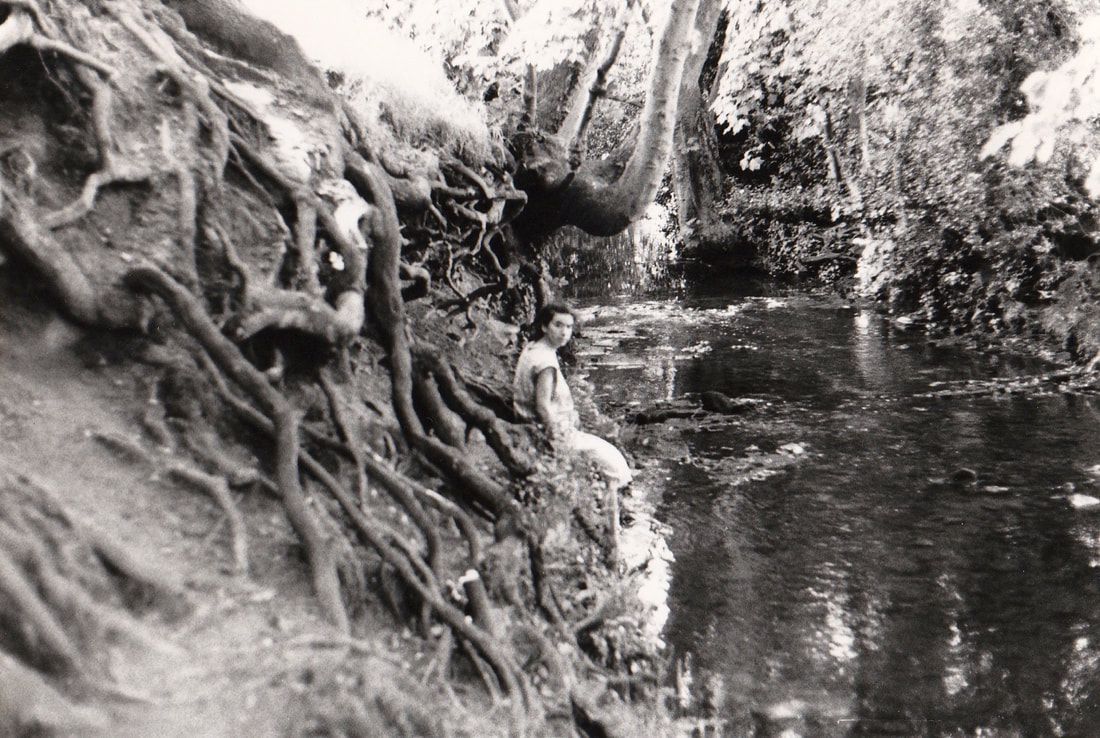



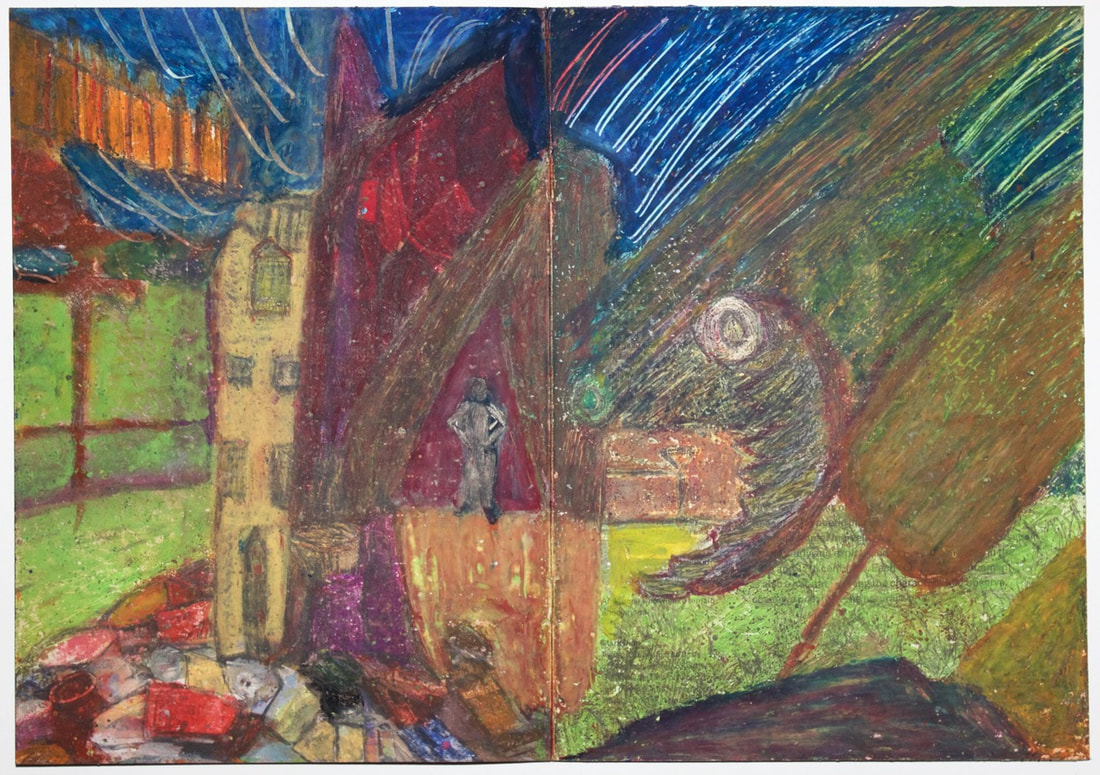






























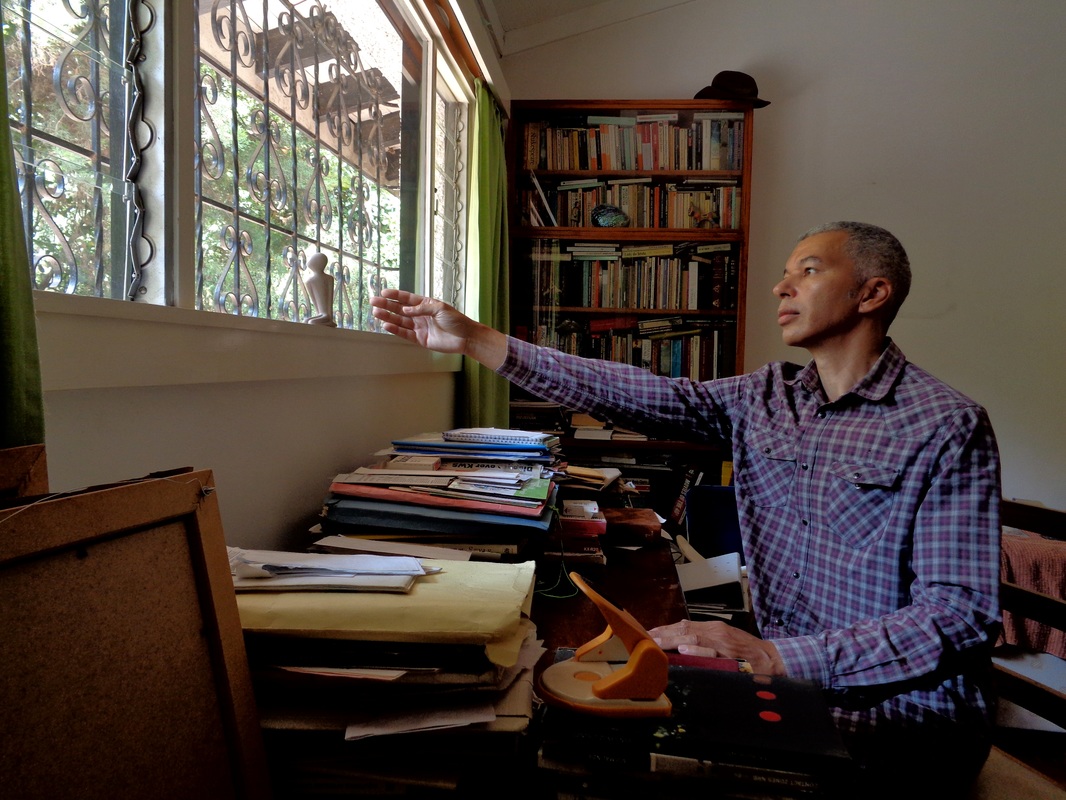



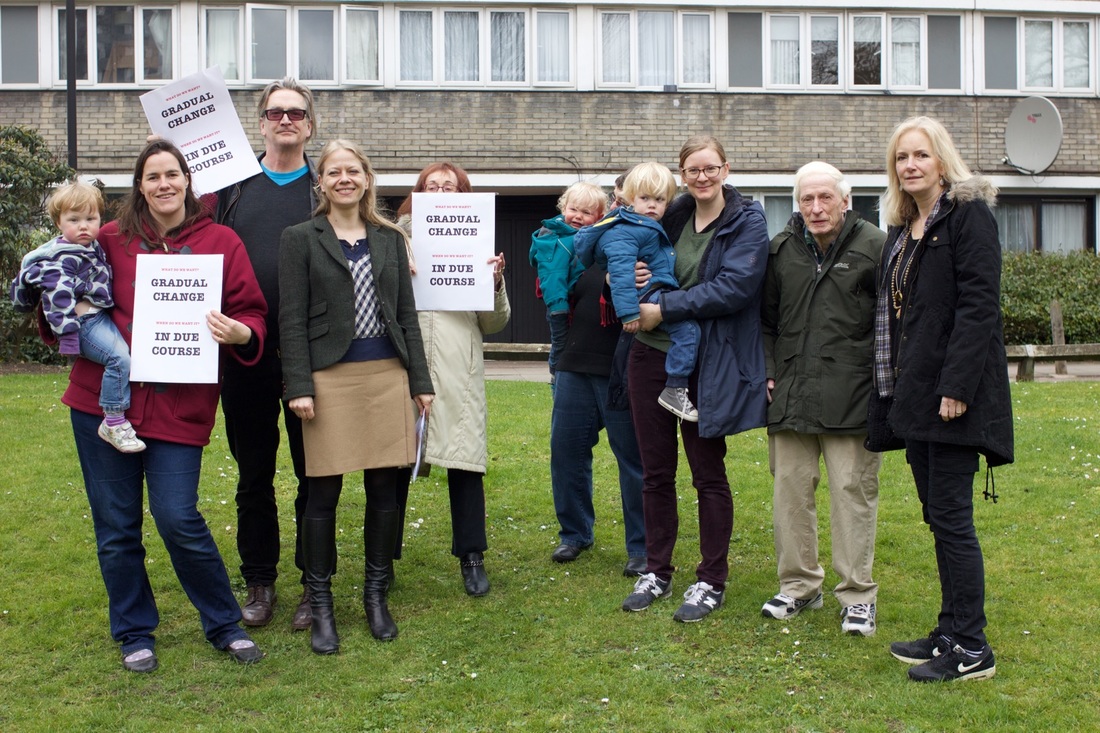



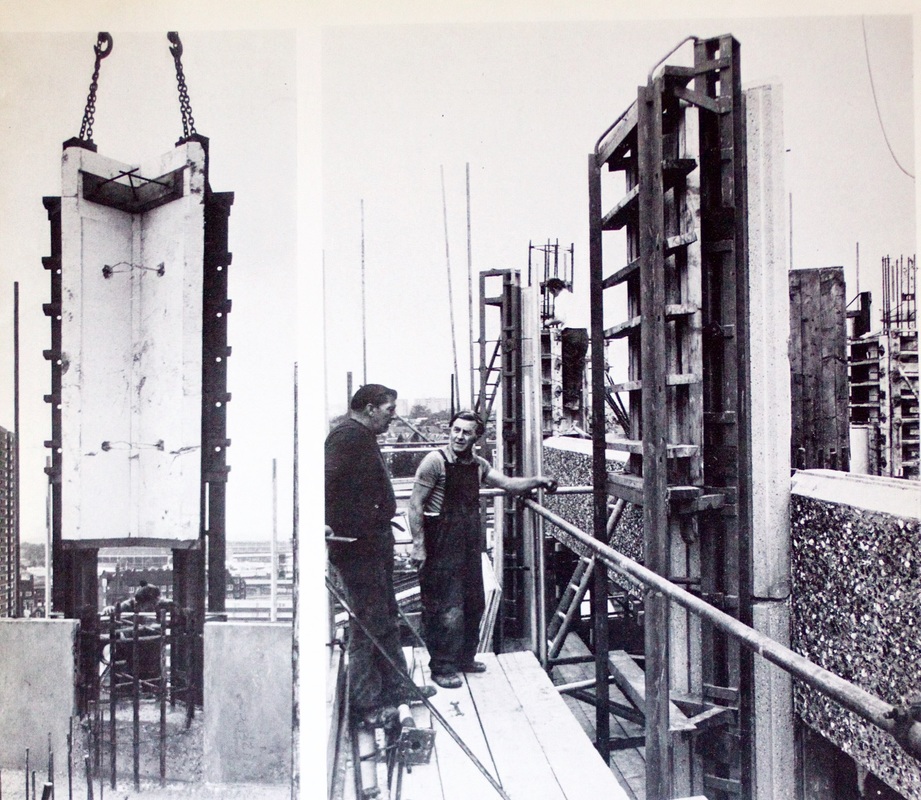






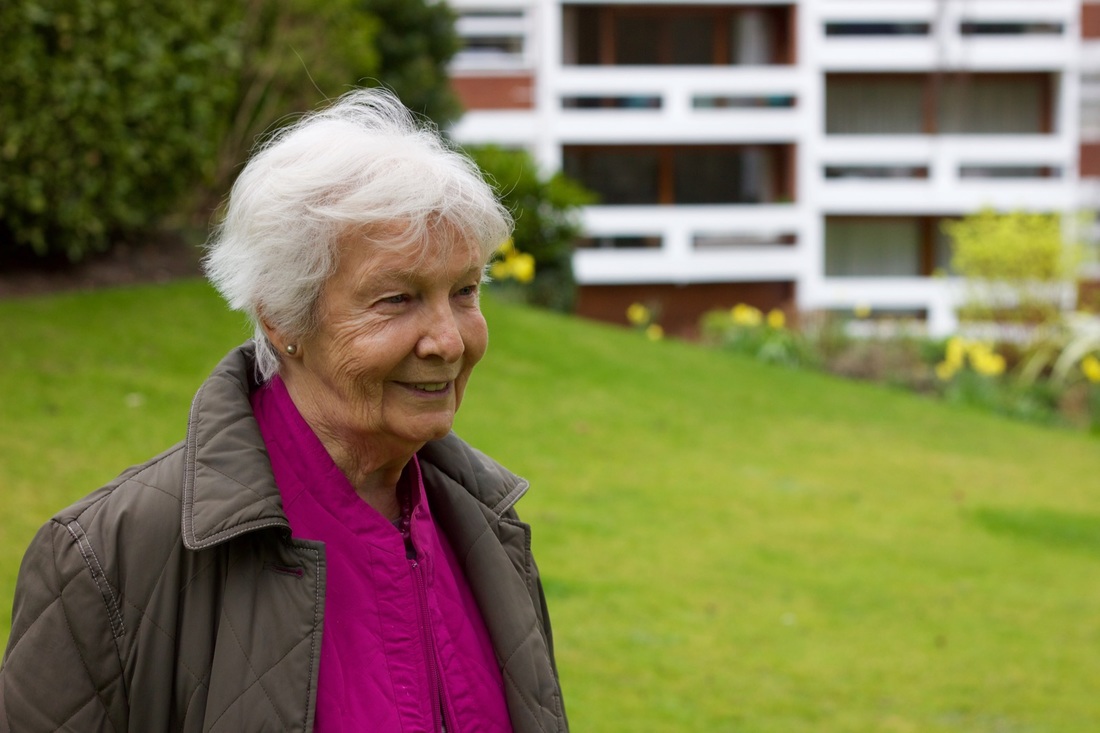

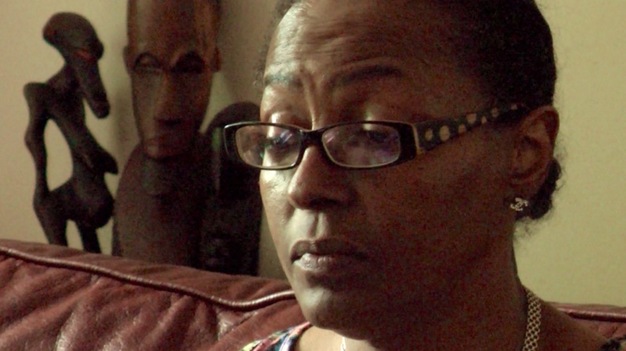











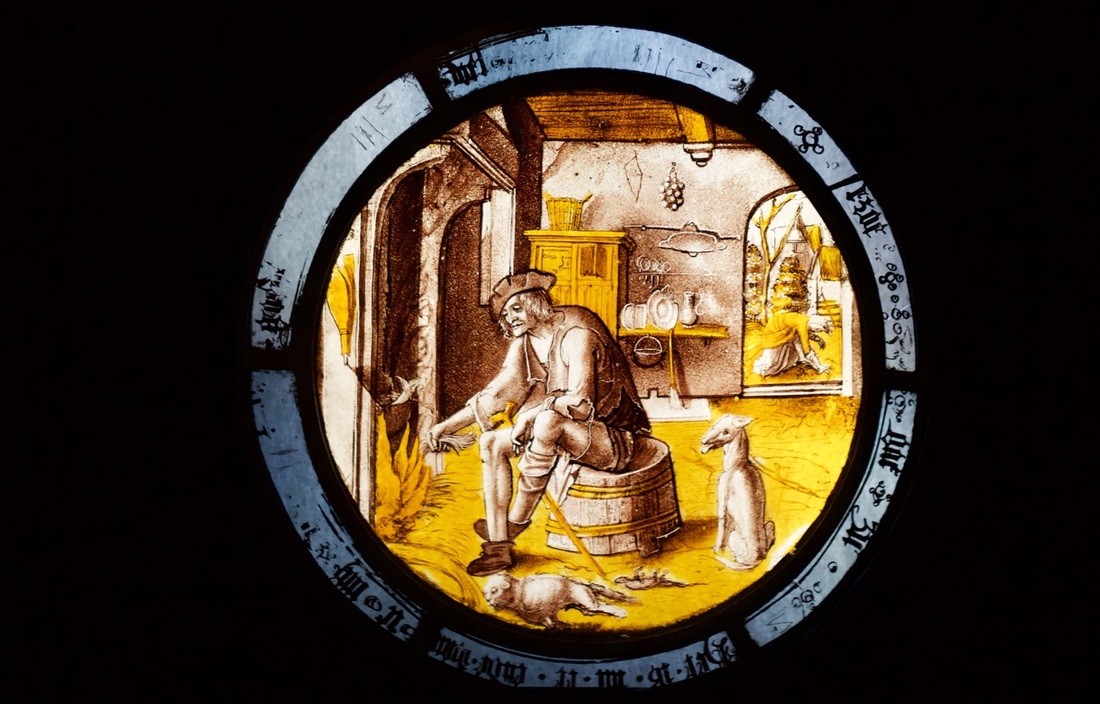

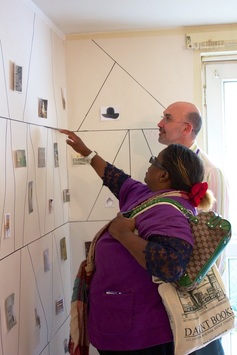

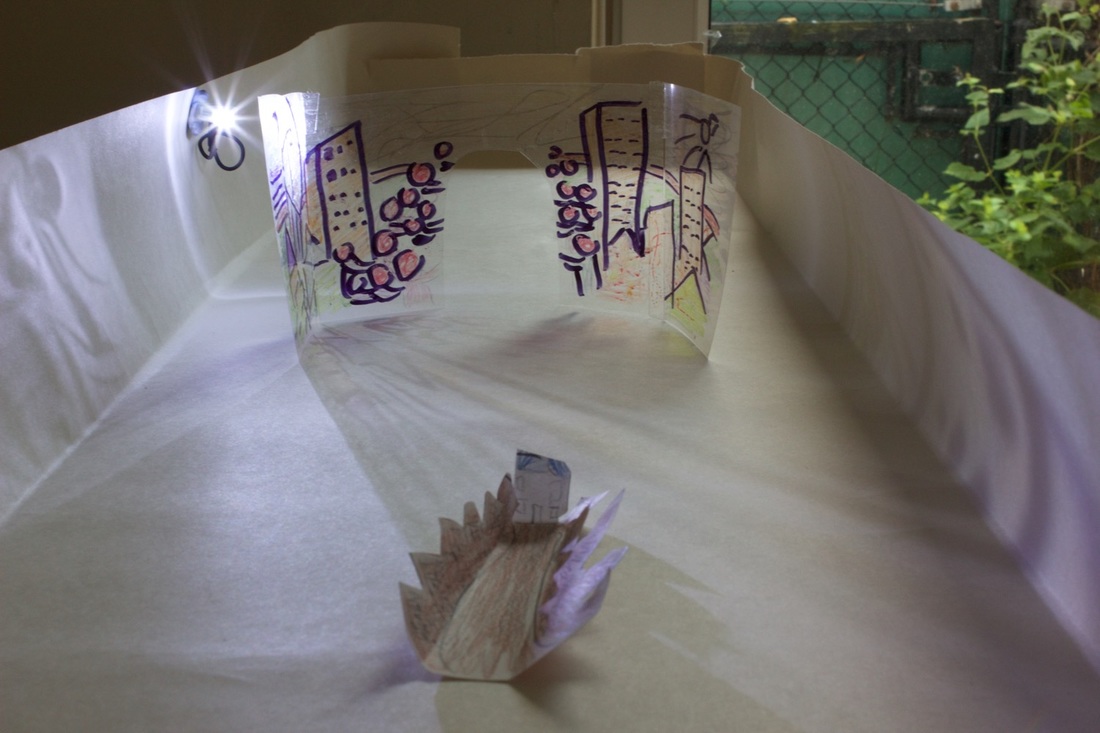






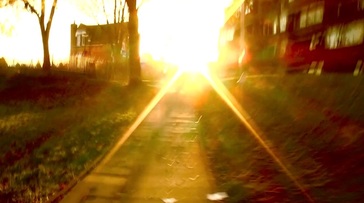


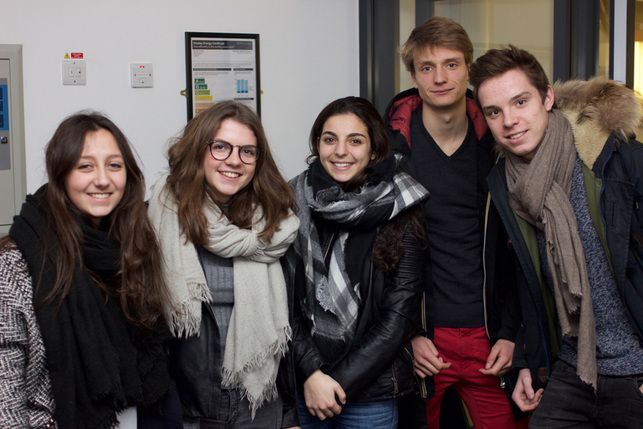
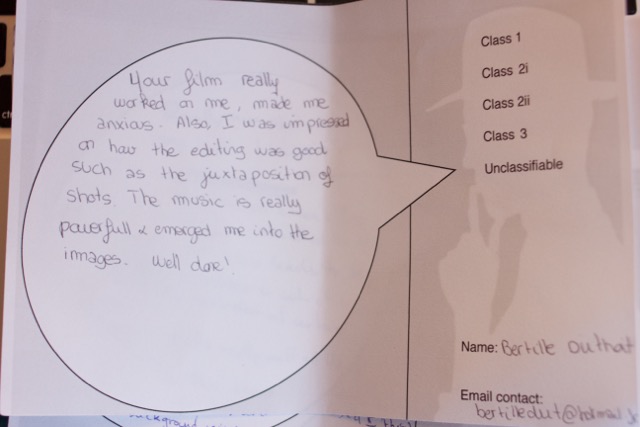





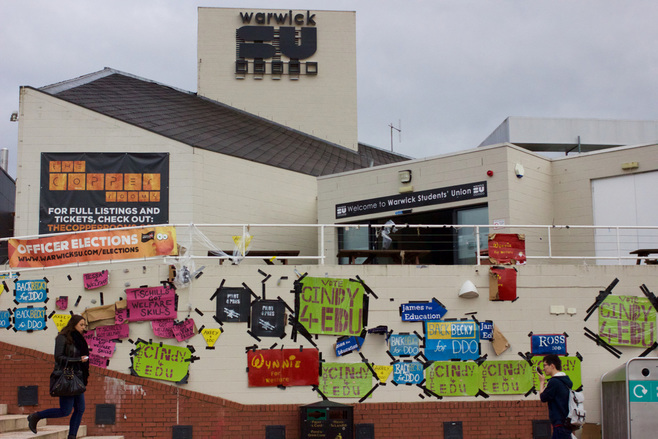






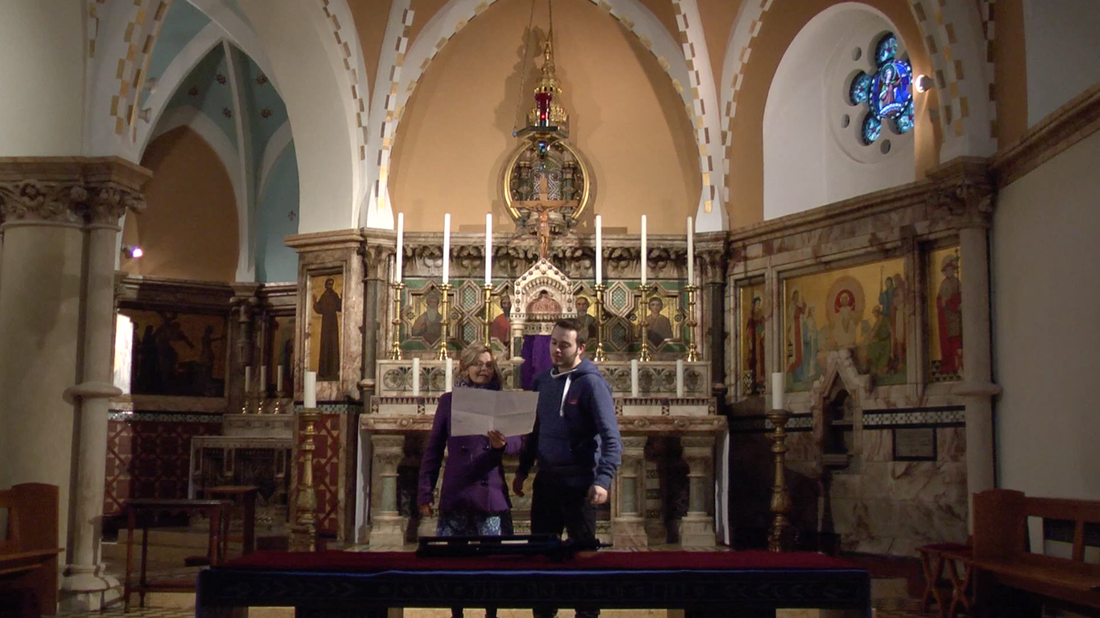
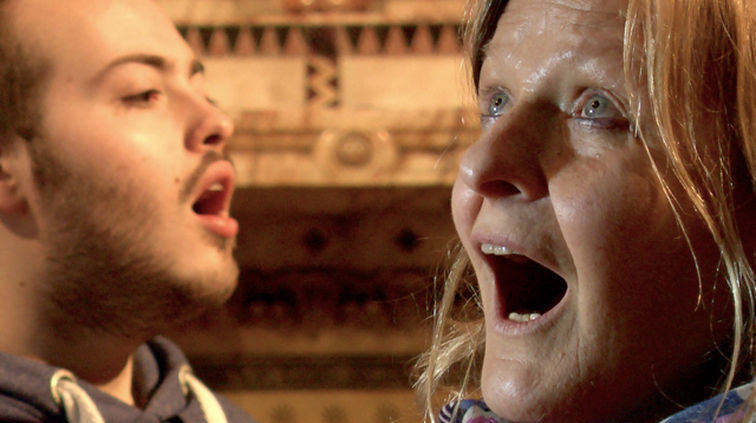



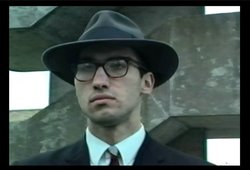



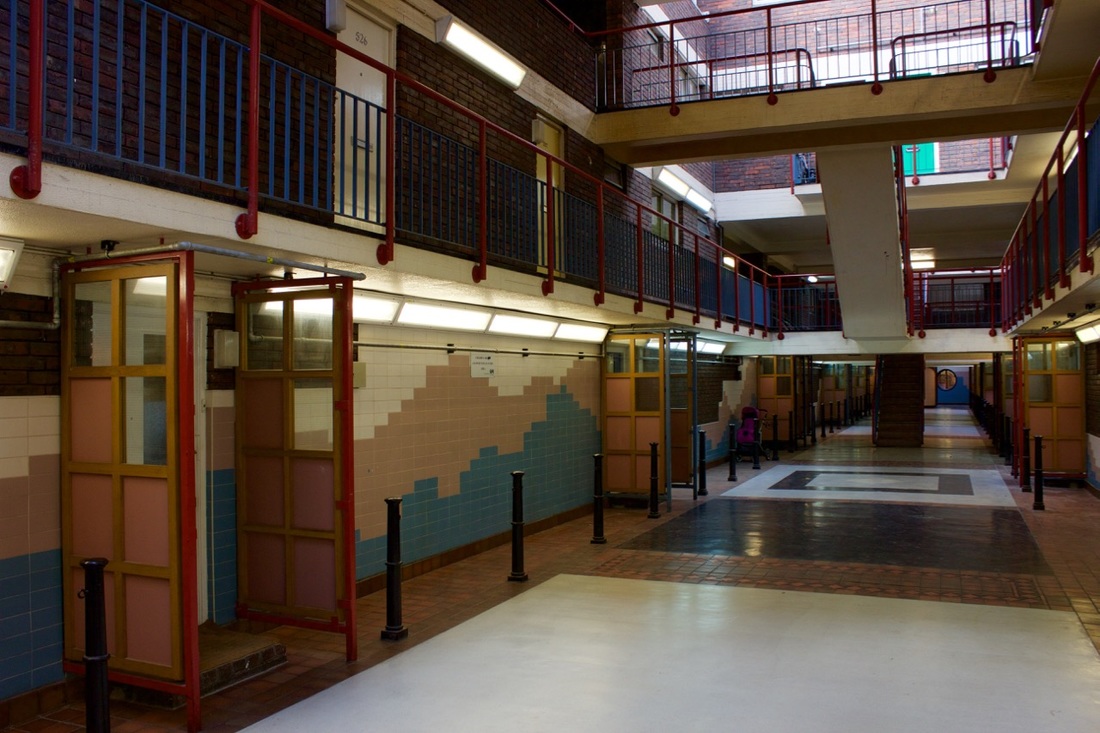

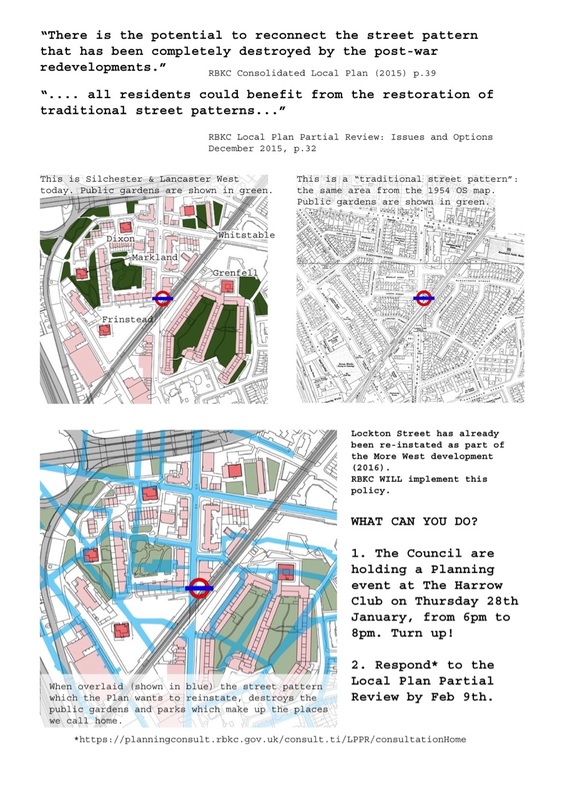

 RSS Feed
RSS Feed
